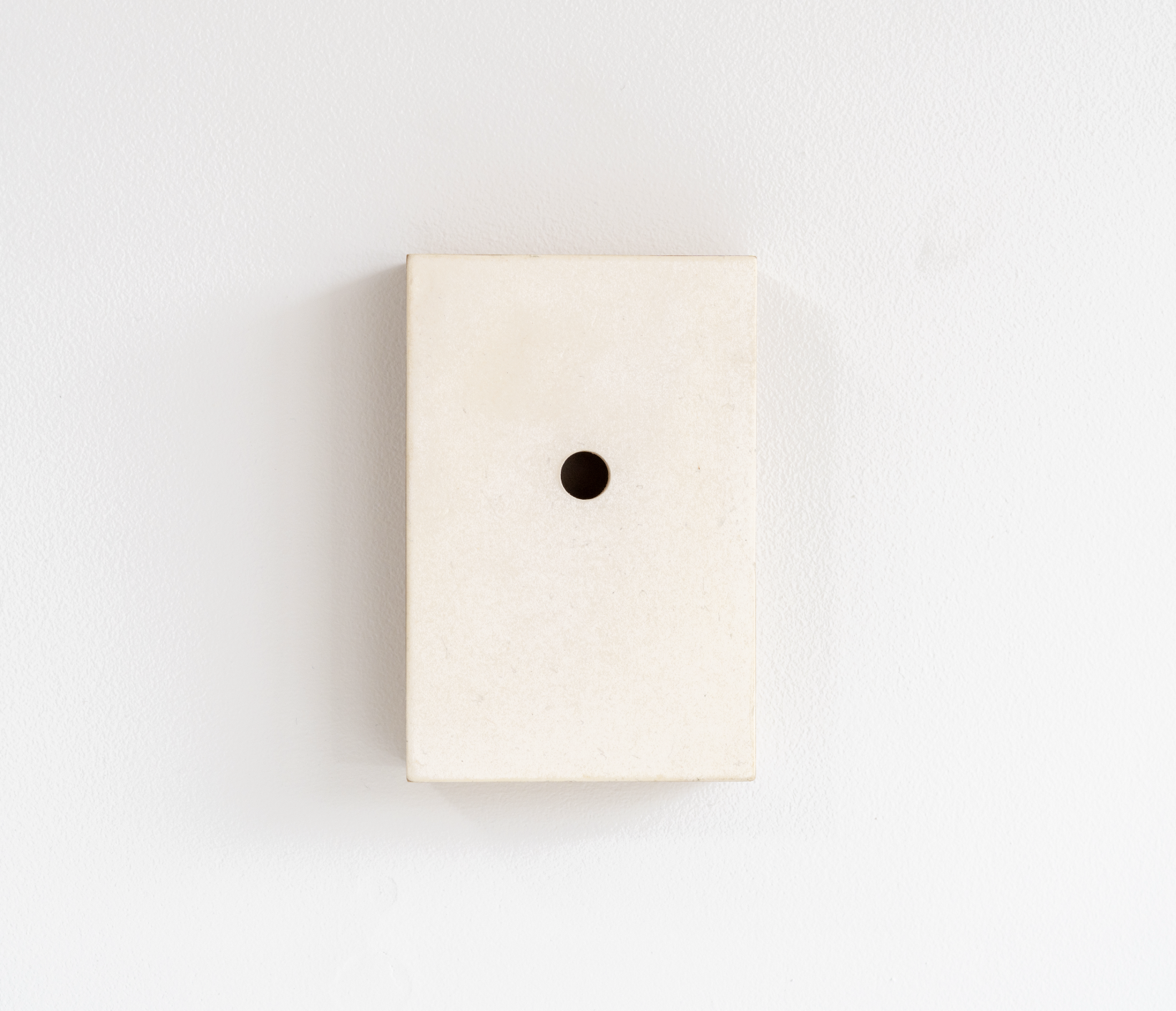
Exhibitions: Susan Te Kahurangi King and Eric Oglander

Left: Detail of Susan Te Kahurangi King, "Untitled", 1966. Right: Eric Oglander, "footing", 2025.
Susan Te Kahurangi King
Eric Oglander
By Golly
July 19 - September 5, 2025
193 N Limestone
Institute 193 is pleased to present By Golly, a two-person exhibition pairing the work of Susan Te Kahurangi King and Eric Oglander alongside archival objects from the personal collection of Petita Cole, King’s sister and de facto art historian. The exhibition positions twelve of King’s drawings – selected by Oglander and Cole –as inspiration for recent works by Oglander. While King often translates everyday objects and phenomena into flattened abstractions, Oglander teases the forms back into the third dimension. Arranged here as a conversation across time and space between the two artists, By Golly elucidates shared concerns, obsessions, and visual themes between differing bodies of work.
Born in 1951 in Te Aroha, New Zealand, Susan Te Kahurangi King began drawing from a young age, recognized early for her artistic prowess. By the time she was seven, King had entirely stopped speaking, but she continued to draw prolifically, developing a unique visual language where pop-culture figures including Mickey Mouse, Donald Duck, and others were stretched, chopped, and otherwise distorted into complex and precisely rendered compositions. After a brief period in the 1990s and early 2000s where she stopped producing artwork, King returned to her practice in 2008. In the more recent drawings exhibited here, the chaotic geometry that long surrounded her early figures becomes the foreground, in what could be taken as a radical progression of her subjects’ fragmentation.
Oglander’s work likewise reveals a fascination with the possibilities of warping and bending quotidian objects or commonplace signs. Born and raised in Tennessee, his work imparts a sense of both possibility and danger inherent equally to childhood science experiments and sojourns through the backcountry. Combining natural objects like wax or wood with everyday industrial materials such as shirt fabrics, coins, or cardboard, his minimal sculptures deploy subtle optical or tactile gestures to appear at once happenstance and painstakingly crafted.
When viewed together, formal similarities come into focus, despite the two artist’s vastly different mediums. An obsession with the possibility of the line is manifested across both bodies of work, whether drawn, found, sewn, or stretched. King deftly renders a variety of wood grain patterns in two drawings from 1966, while Oglander explores the same variety by combining sticks, scraps of plywood and lumber, and taut shirt fabrics stretched to distort their precise patterns. More conceptually, the artists share a desire to explore and illustrate the concept of tension. In many drawings, King’s figures are stretched or wrenched past the point of a body’s natural capacity, and even her most abstract elements toe the line between order and chaos. Similarly, Oglander’s sculptures, particularly the trebuchets or those involving nylon string and found street sweeper bristles, often freeze the moments just before a tenuous spatial arrangement tips over into total collapse. Underneath a surface of precise craftsmanship, both artists call into presence the fundamental pliability of the worlds both surrounding us and interior to our own experience, a pliability both exhilarating and terrifying to encounter.
About Susan Te Kahurangi King:
Susan Te Kahurangi King was born in 1951 in Te Aroha, New Zealand. The second eldest of twelve children, she began drawing from a young age. King’s artistic abilities only increased with time; her teachers remarked on her renderings of complicated figures and her ability to concentrate on drawing for hours at a time. At five years old, King’s speech began to decline, and by the age of seven she had stopped speaking entirely. As her speech lessened, King’s commitment to drawing only increased. Even at seven years old, she was prolific and showed great promise as an artist.
In 1960, King’s family moved to Auckland for King to attend a newly established IHC school for children with learning disabilities, which she attended for almost three decades. Into adulthood, King developed a mode of deconstructing and expanding figures, incorporating characters like Mickey Mouse, Donald Duck, Cruella de Vil into elaborate, multi-planar scenes. She continued to make drawings until the early 1990s, when, during a difficult period, she stopped drawing altogether.
After almost two decades, King recommenced her work in 2008. Encouraged by renewed interest in her drawings and the upcoming production of Dan Salmon’s documentary, “Pictures of Susan,” she began making work in conversation with her final drawings of the nineties. In a matter of months, King had her first solo exhibition at Callan Park, Sydney, curated by Peter Faye. She swiftly went on to exhibit in Auckland, New York, and Paris, presenting her first museum exhibition at the ICA Miami in 2016. In 2018, she was awarded a Fellowship with the American Folk Art Museum (New York, NY).
King’s work resides in the collections of the Museum of Modern Art (New York, NY), the American Folk Art Museum (New York, NY), the Chartwell Collection at Auckland Art Gallery (Toi o Tāmaki, New Zealand), The Arts Trust House (Auckland, New Zealand), and the Philadelphia Museum of Art (Philadelphia, PA). She lives and works in Hamilton, New Zealand.
About Eric Oglander:
Driven by experimentation and craft, Eric Oglander creates intimately scaled minimalist sculptures that explore subtle optical and scientific phenomena. Using everyday materials like string, plywood, branches, metal, and found objects that unify and neutralize, rendering the newly formed objects into a coherent whole thought. The resulting works each possess an airiness and delicate quality. While most of his sculptures exist purely for their aesthetic value, some are capable of throwing small projectiles. These Trebuchets and Catapults pieces stem from Eric's childhood fascination with medieval siege engines discovered while watching the History Channel. They now embody his mature artistic practice, balancing play, physics, and visual appeal through a lens of enduring childlike wonder. Recent solo exhibitions of Oglander’s work include Do Nothing Machine at Bernheim Gallery (London, UK) and To Ward at Swivel Gallery (Saugerties, NY).
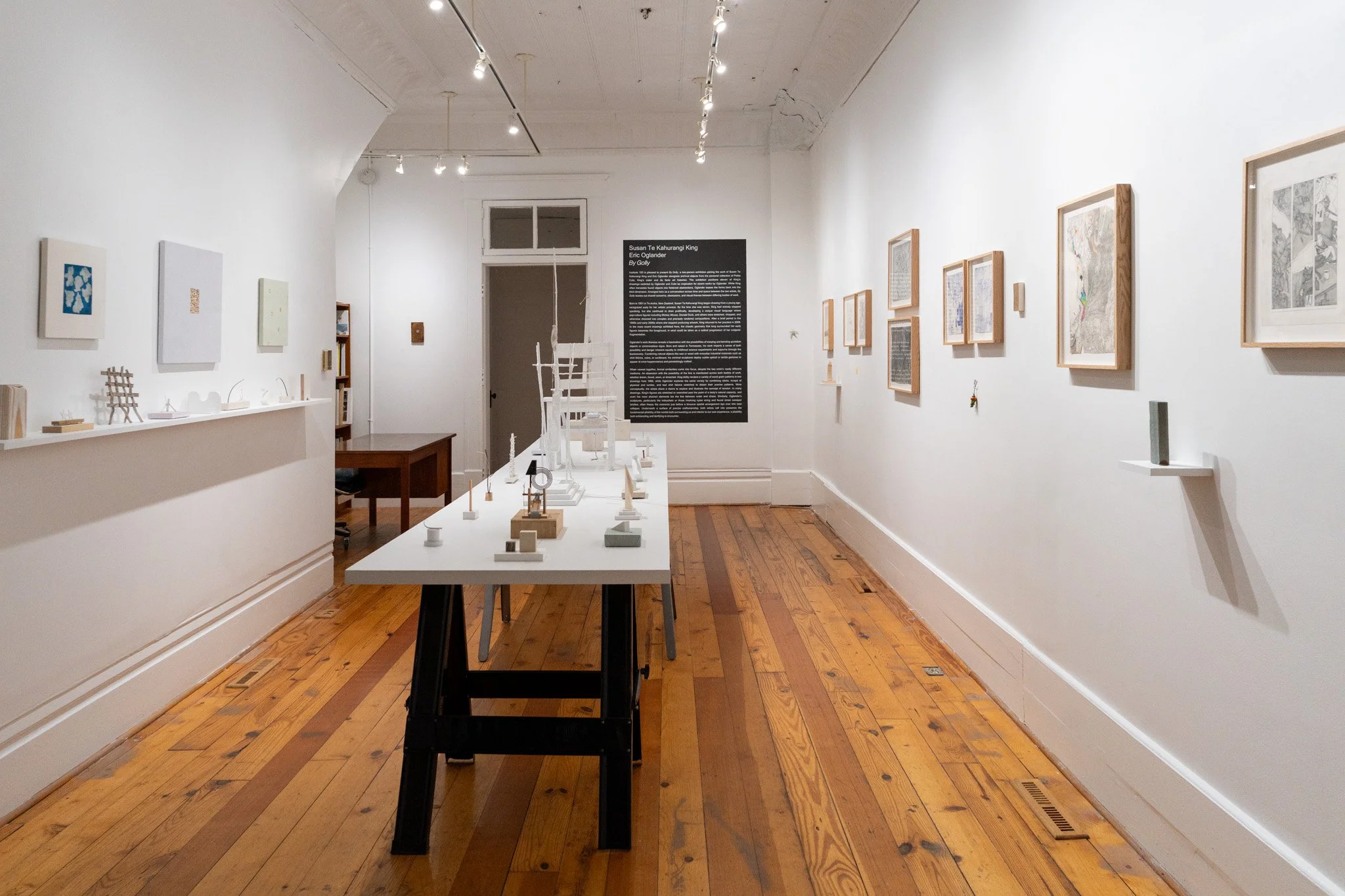
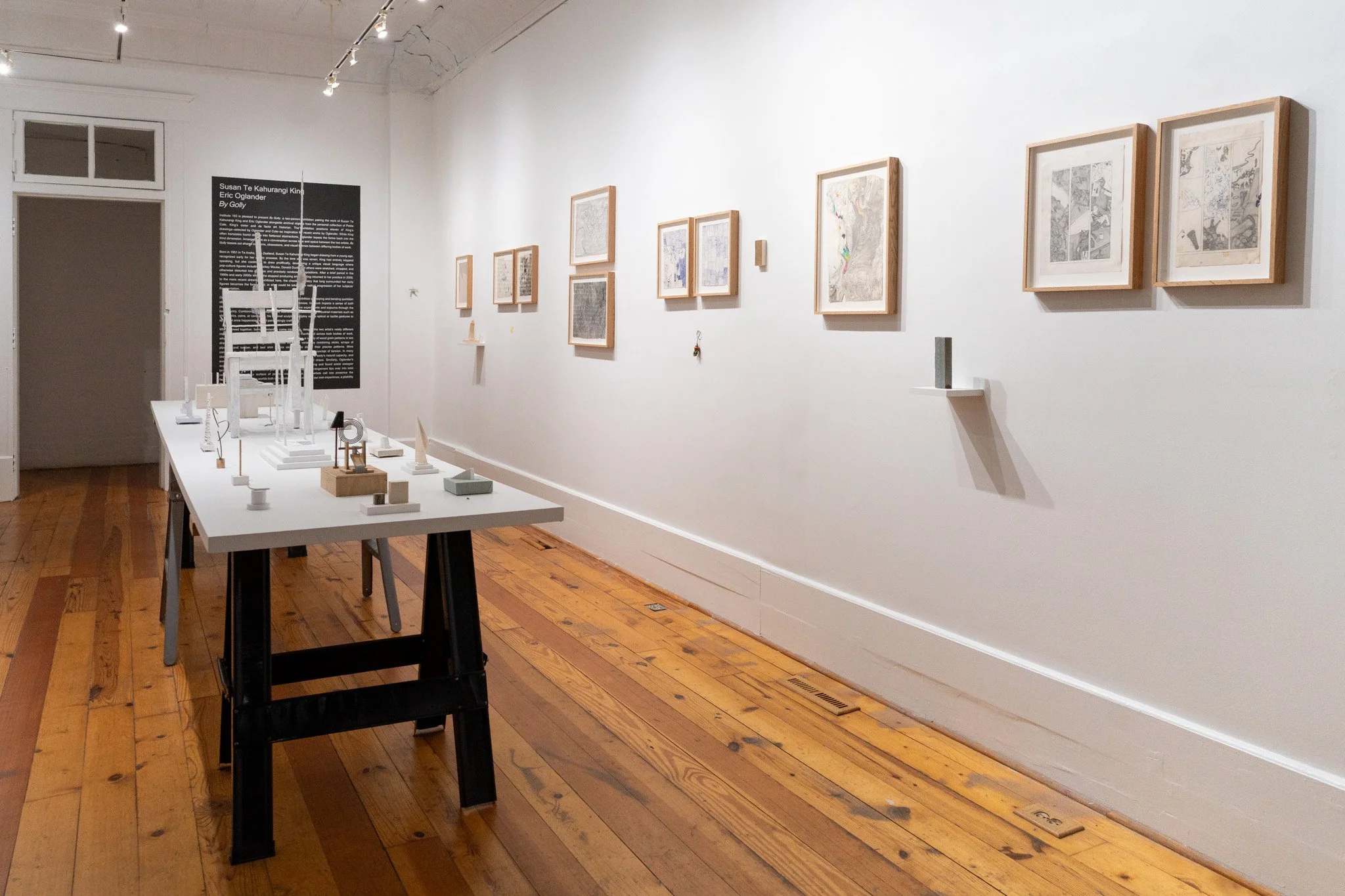
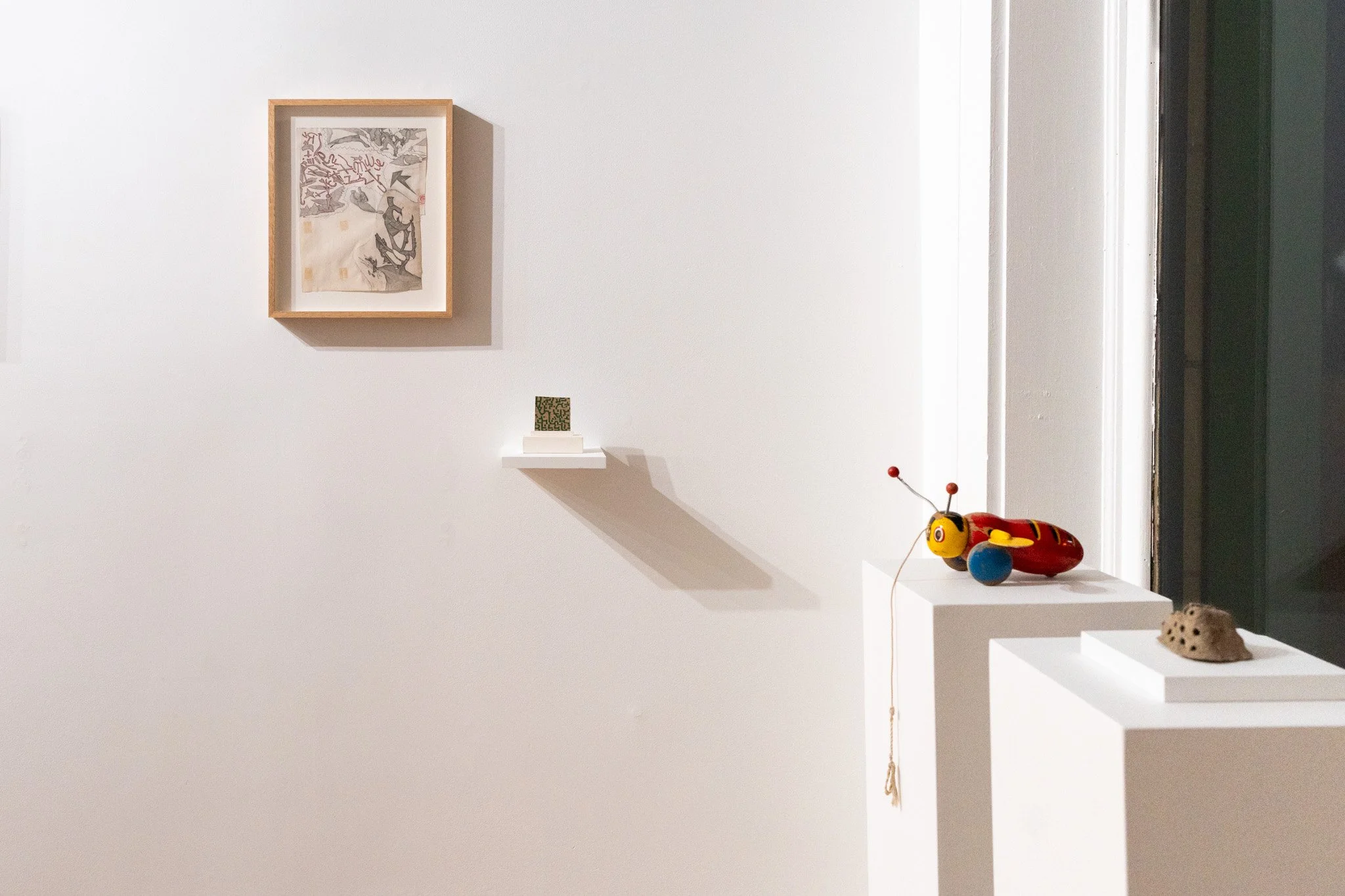


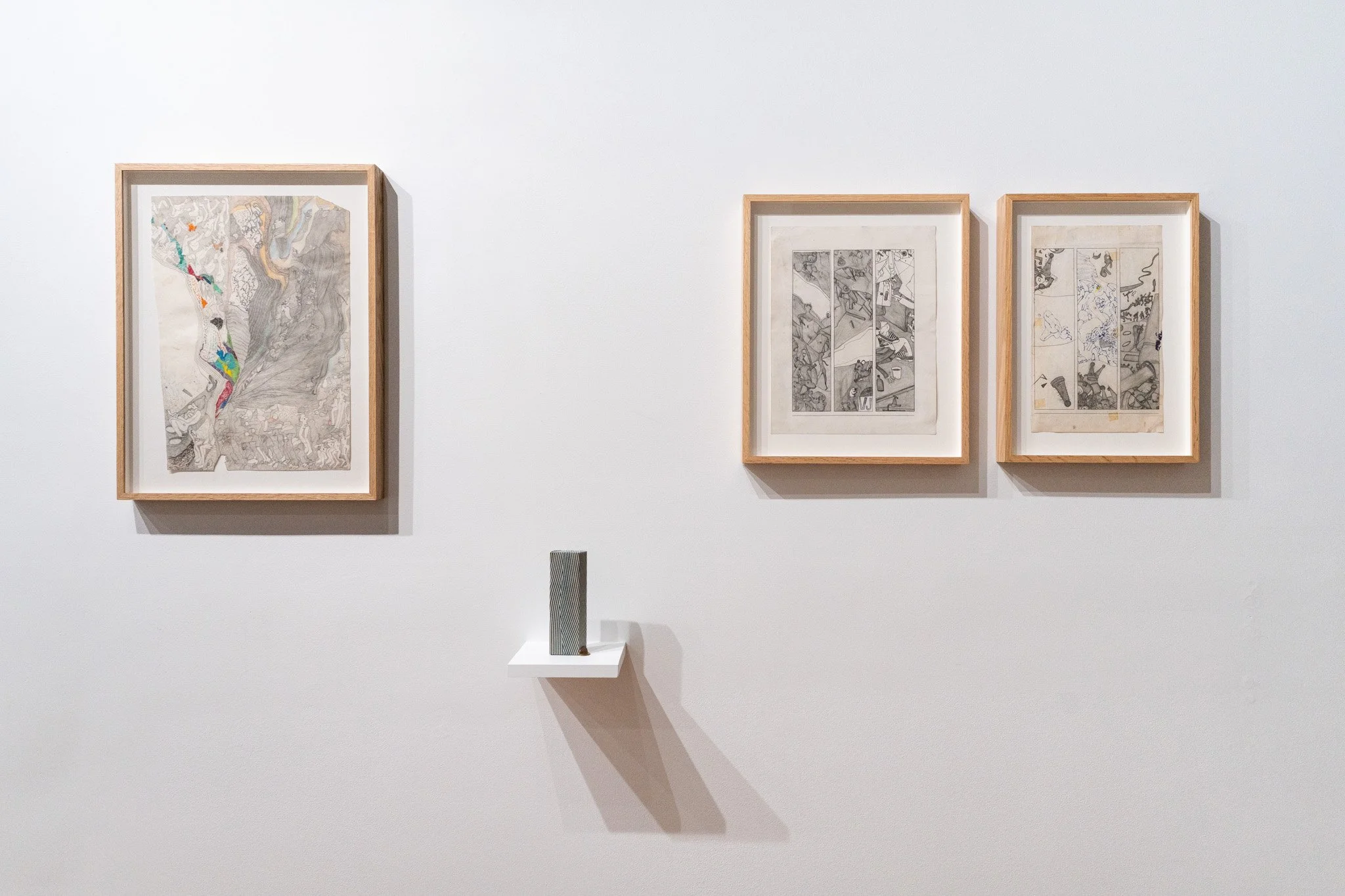
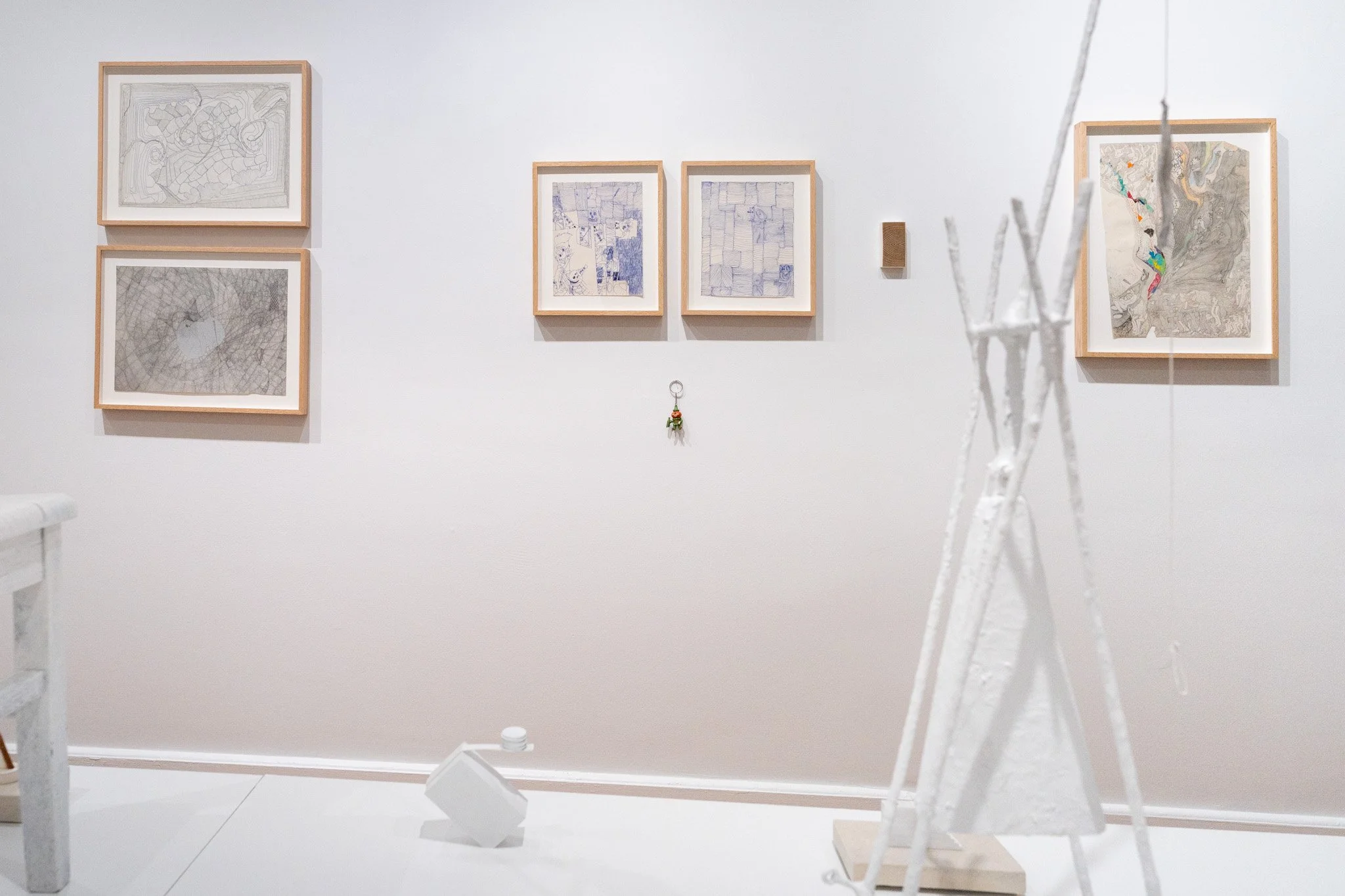

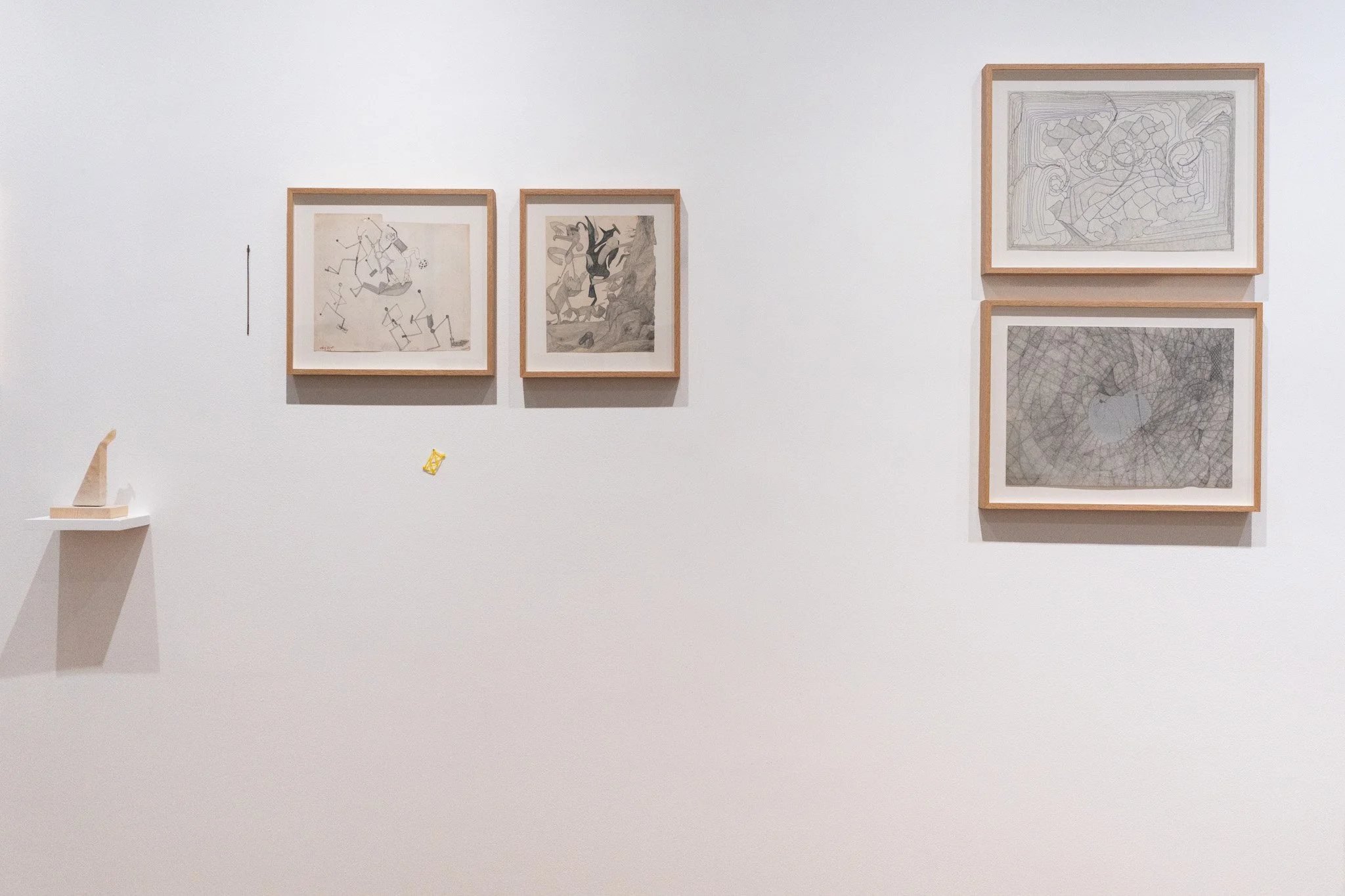



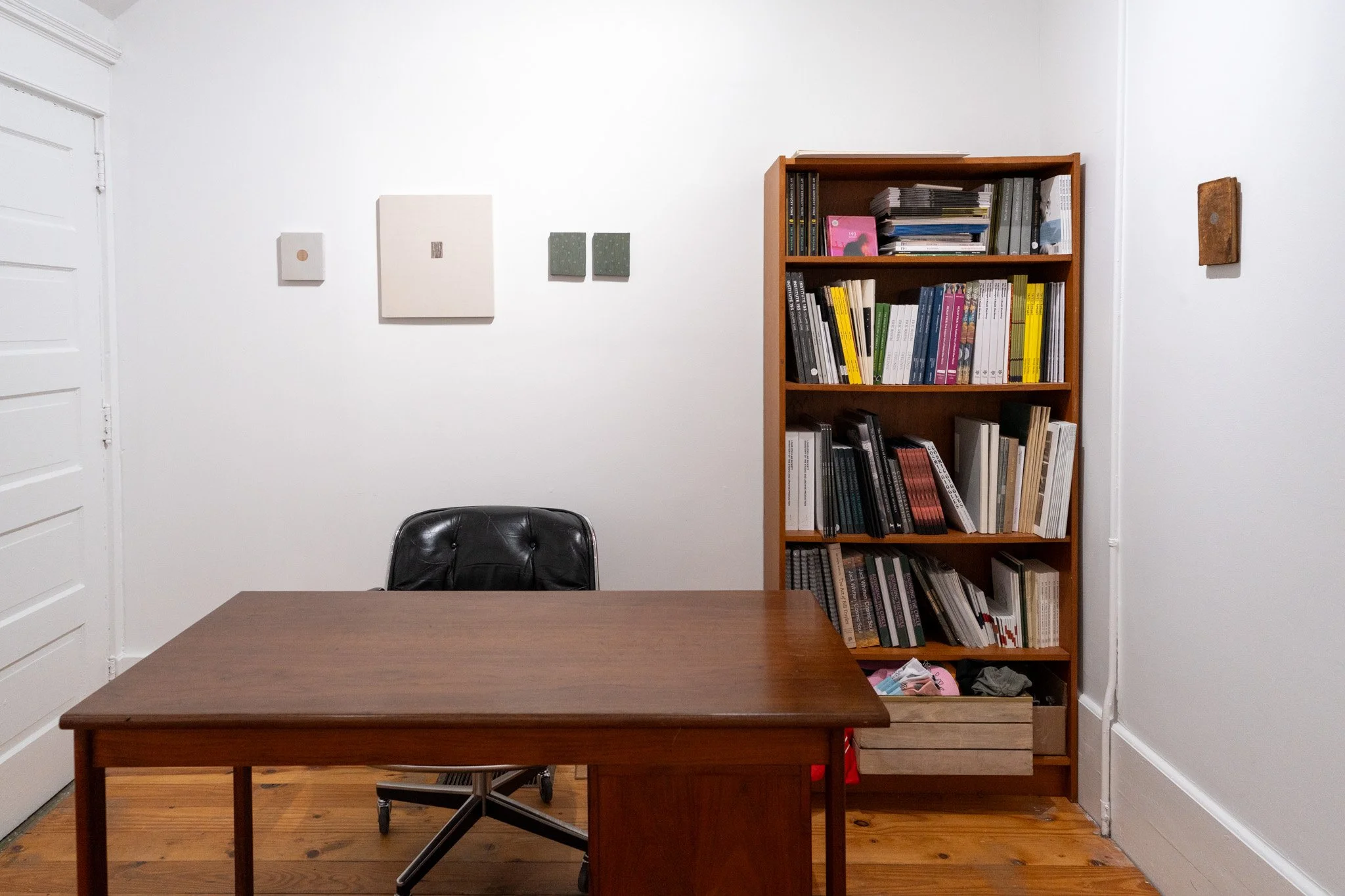



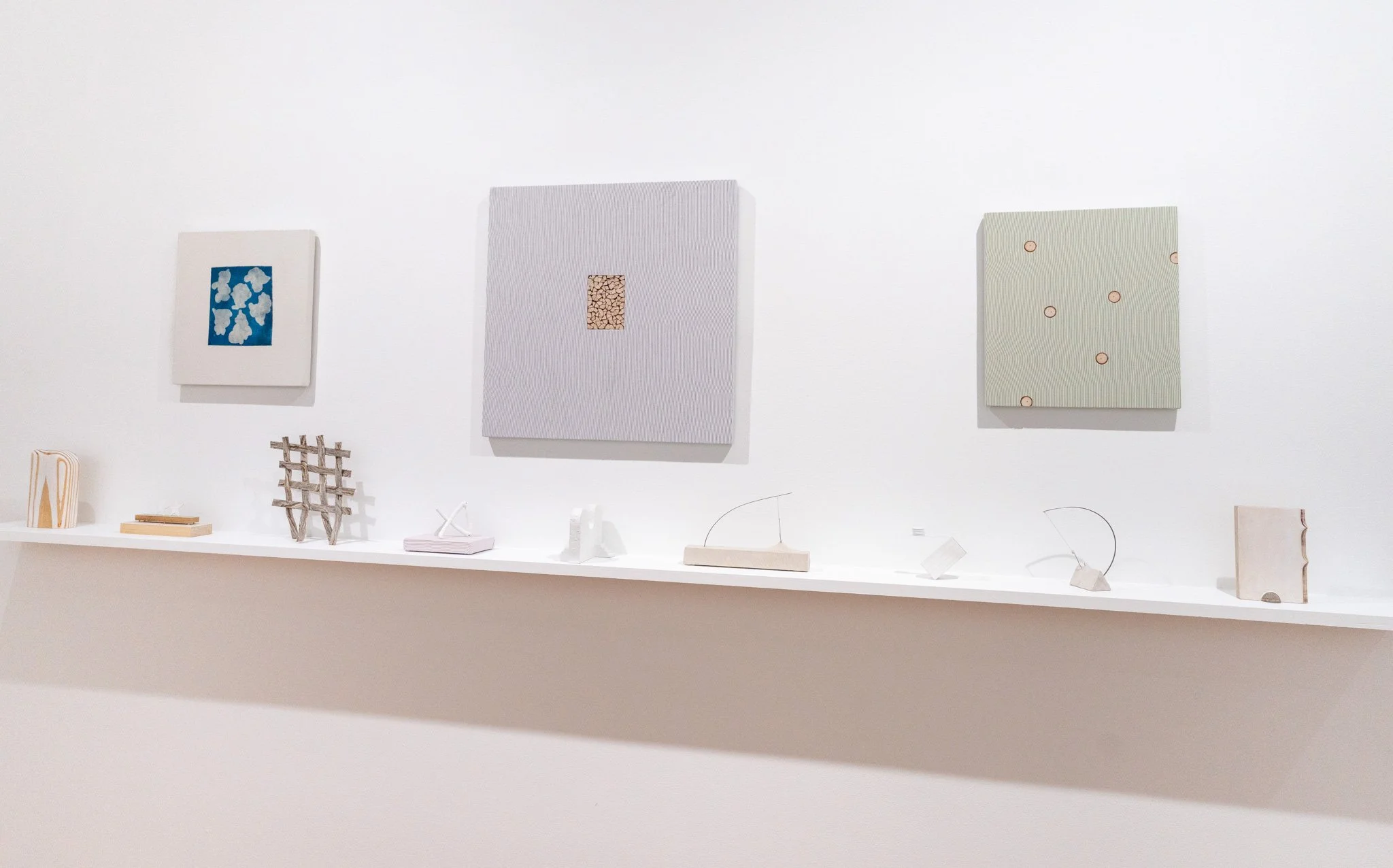
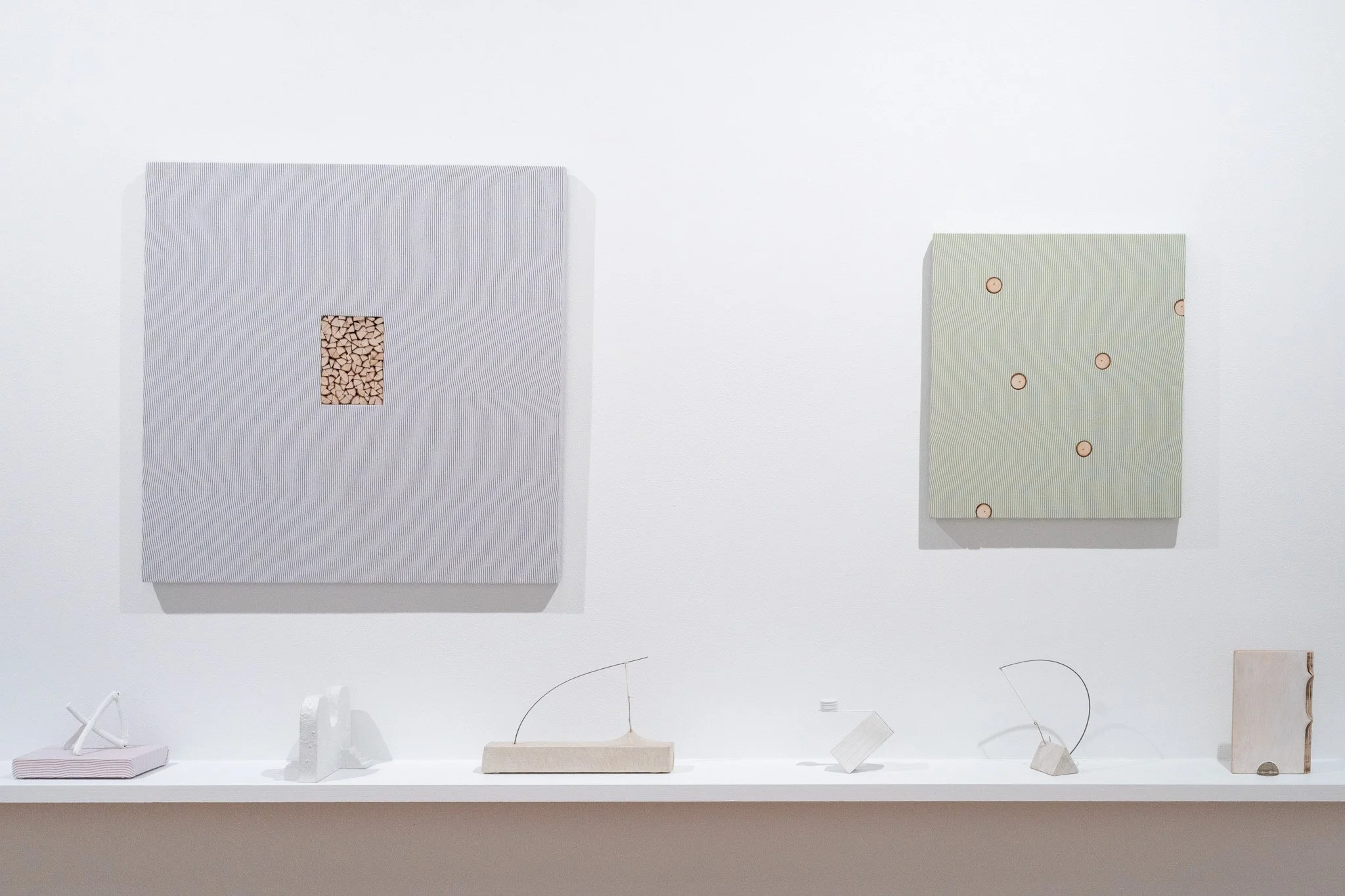

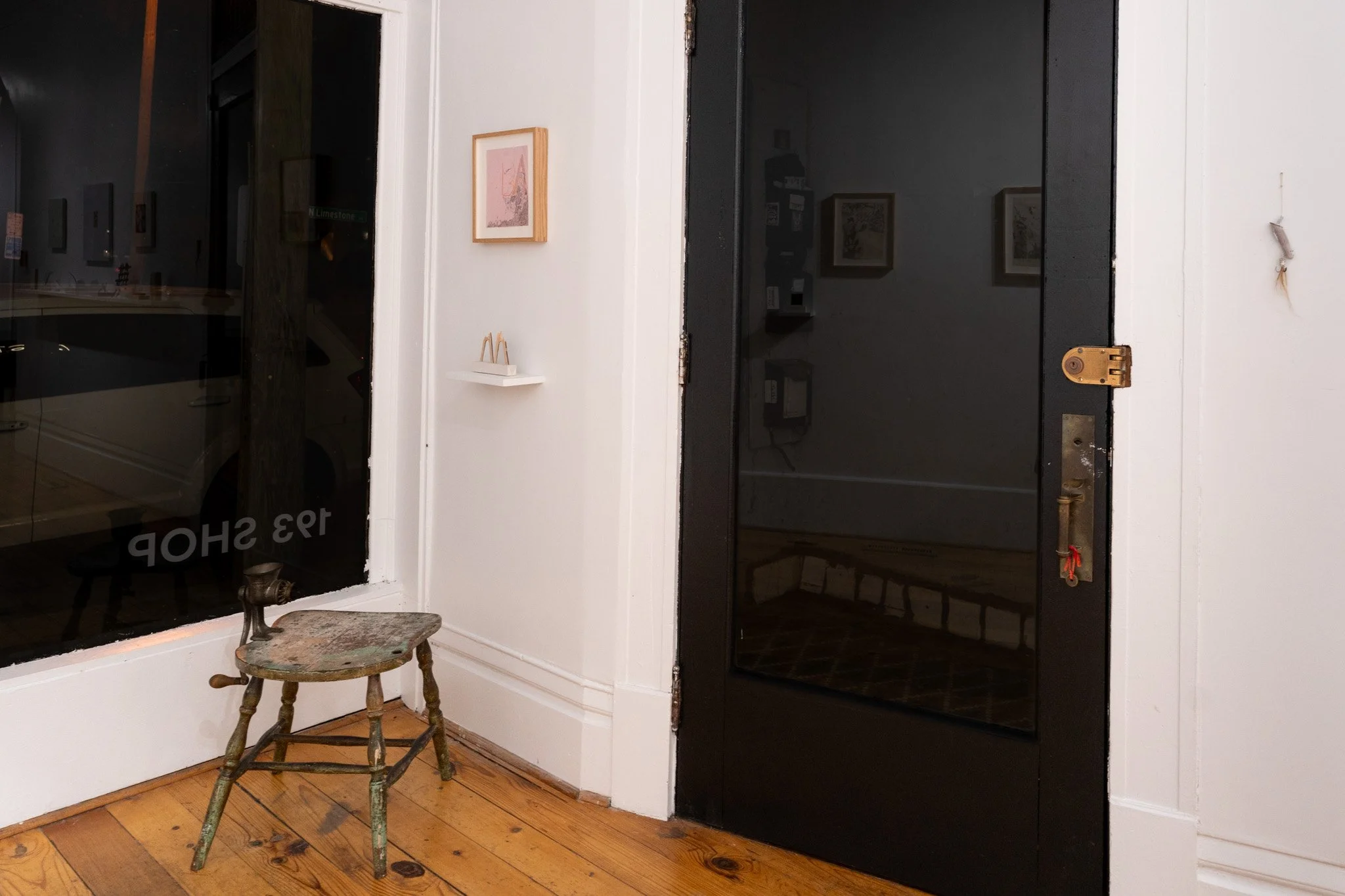




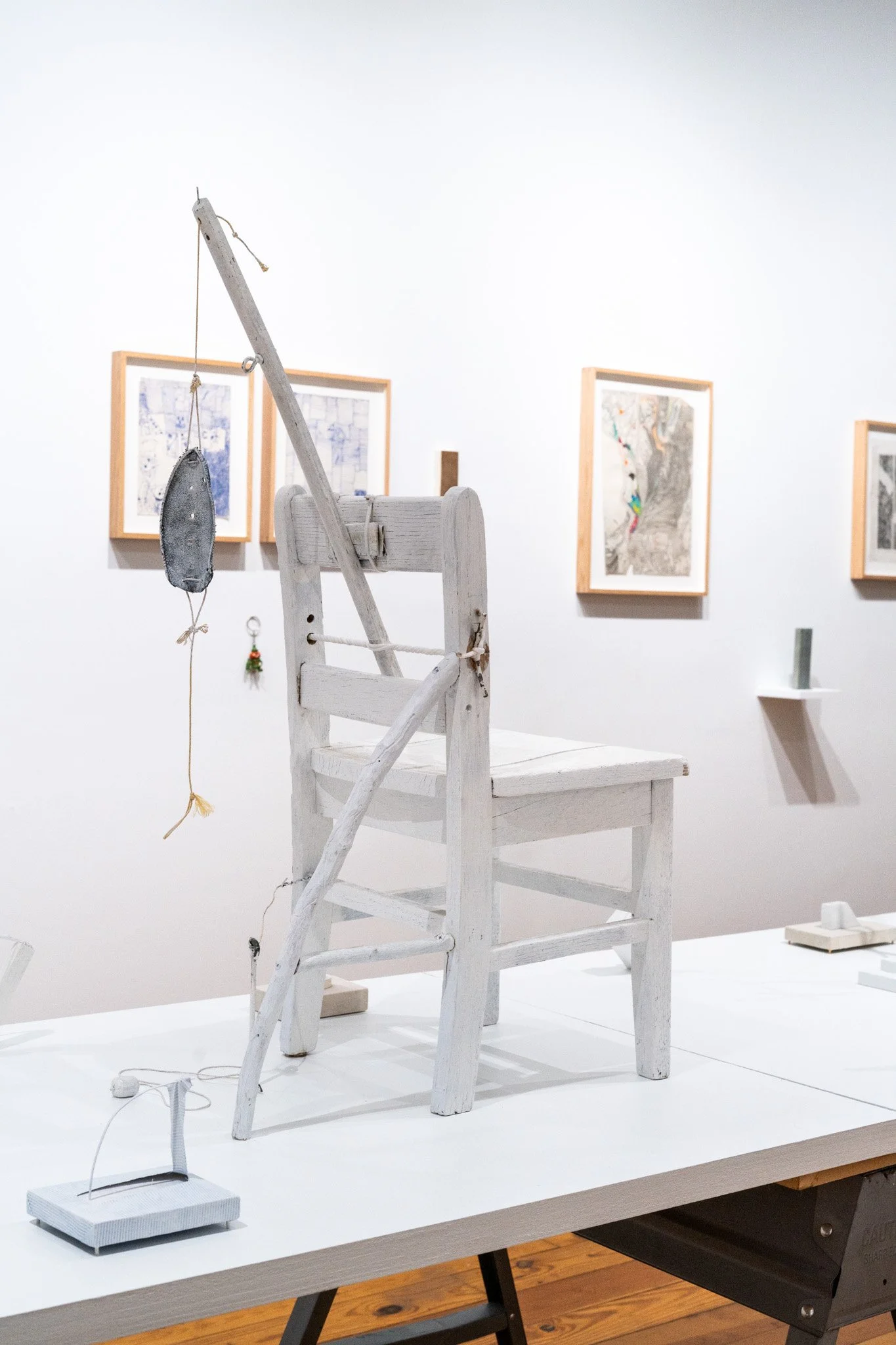


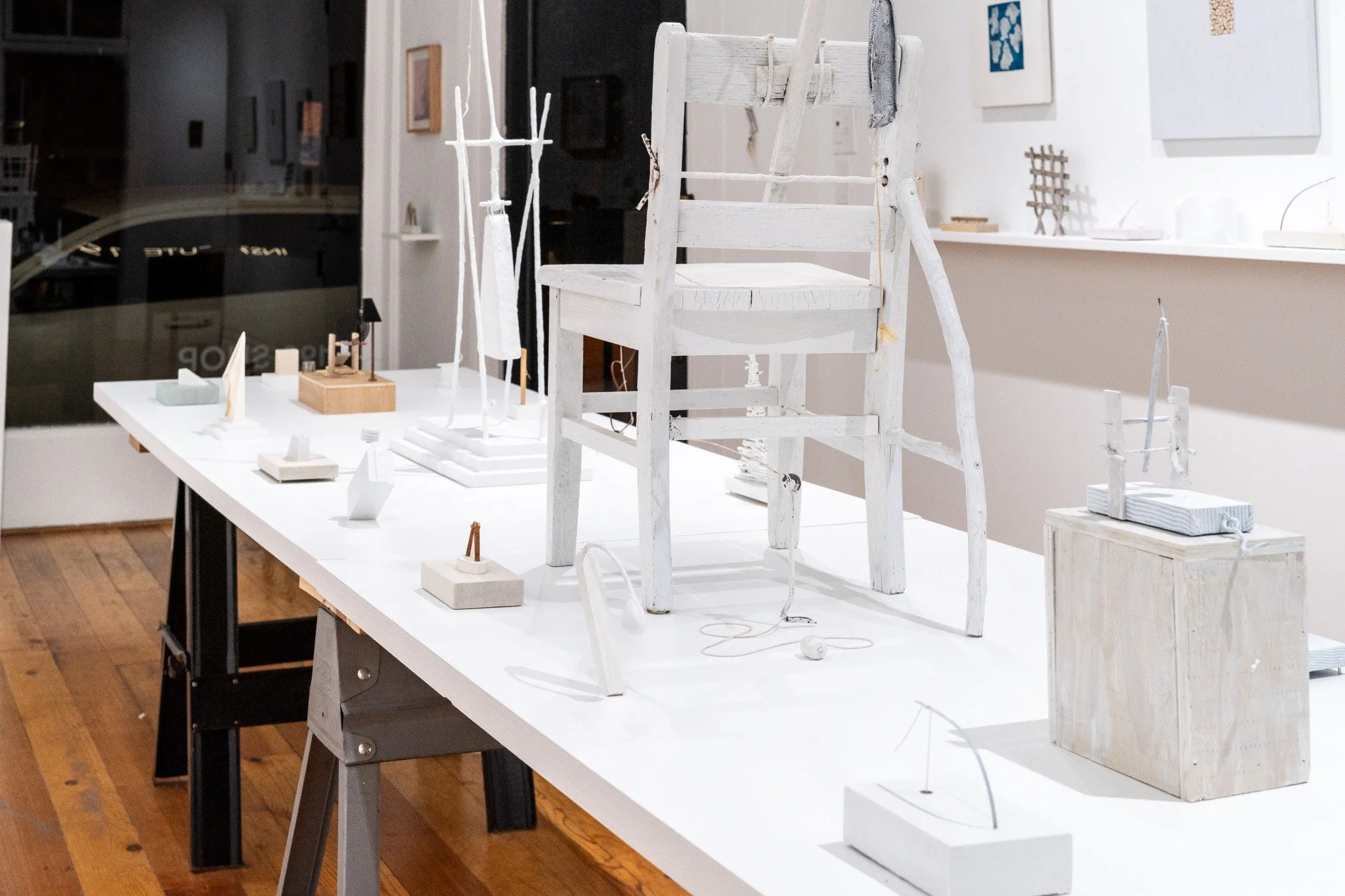

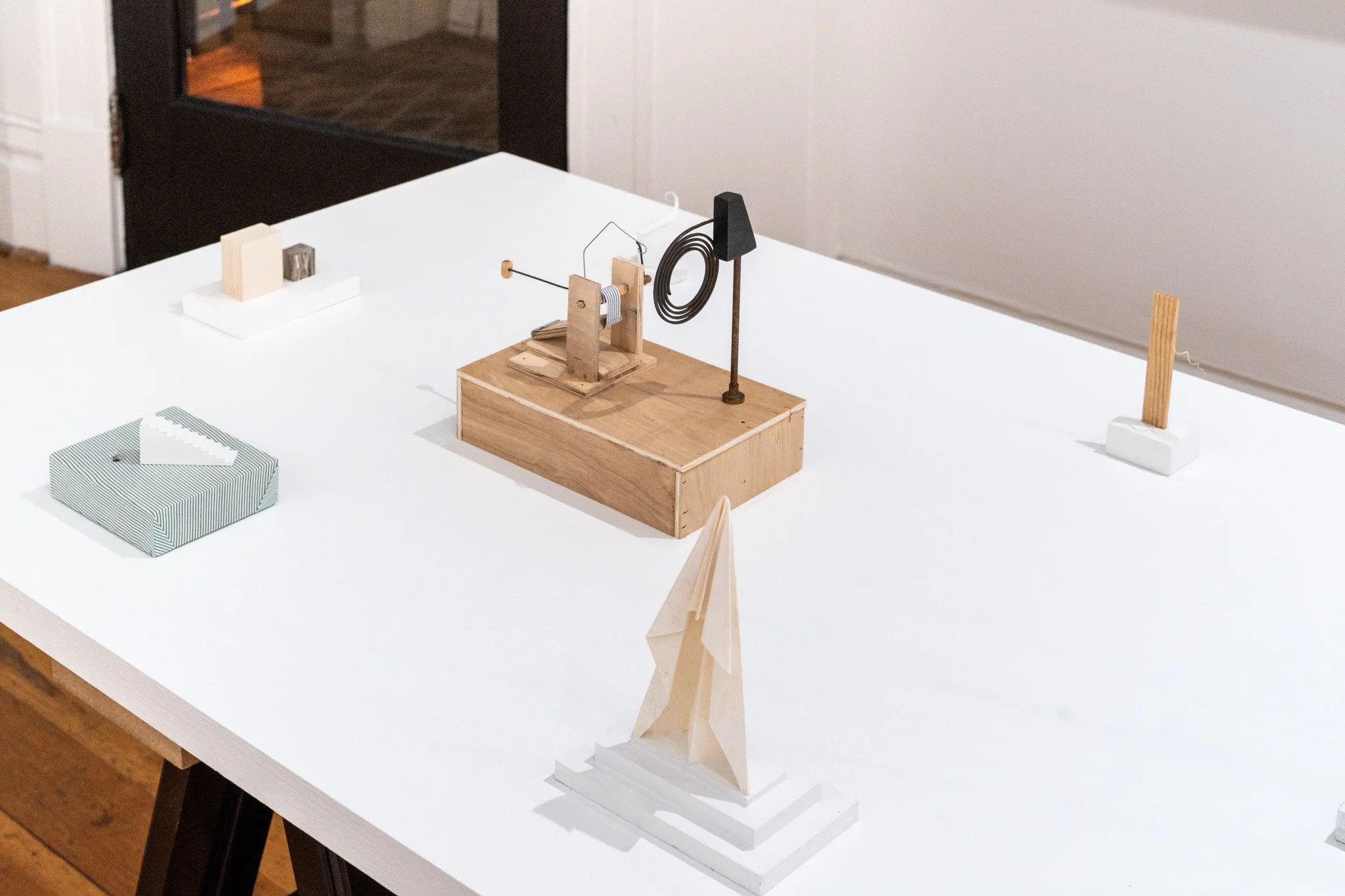

Installation views of Susan Te Kahurangi King and Eric Oglander, By Golly, 2025.
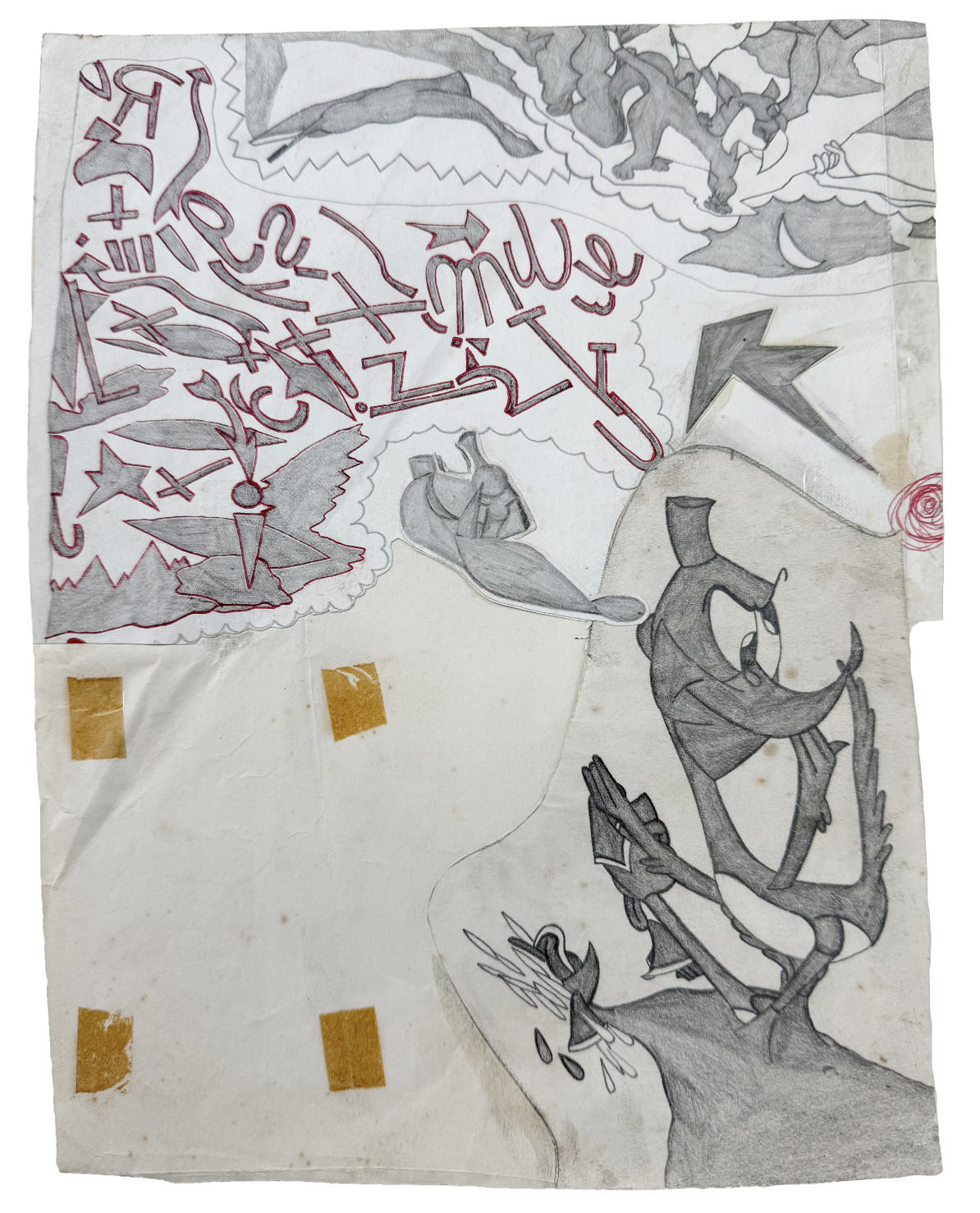
Susan Te Kahurangi King, Untitled, c. 1965-1975, graphite and ink, scrapbooked by Myrtle Murphy, King’s grandmother, 10 ¾ x 8 ½ inches
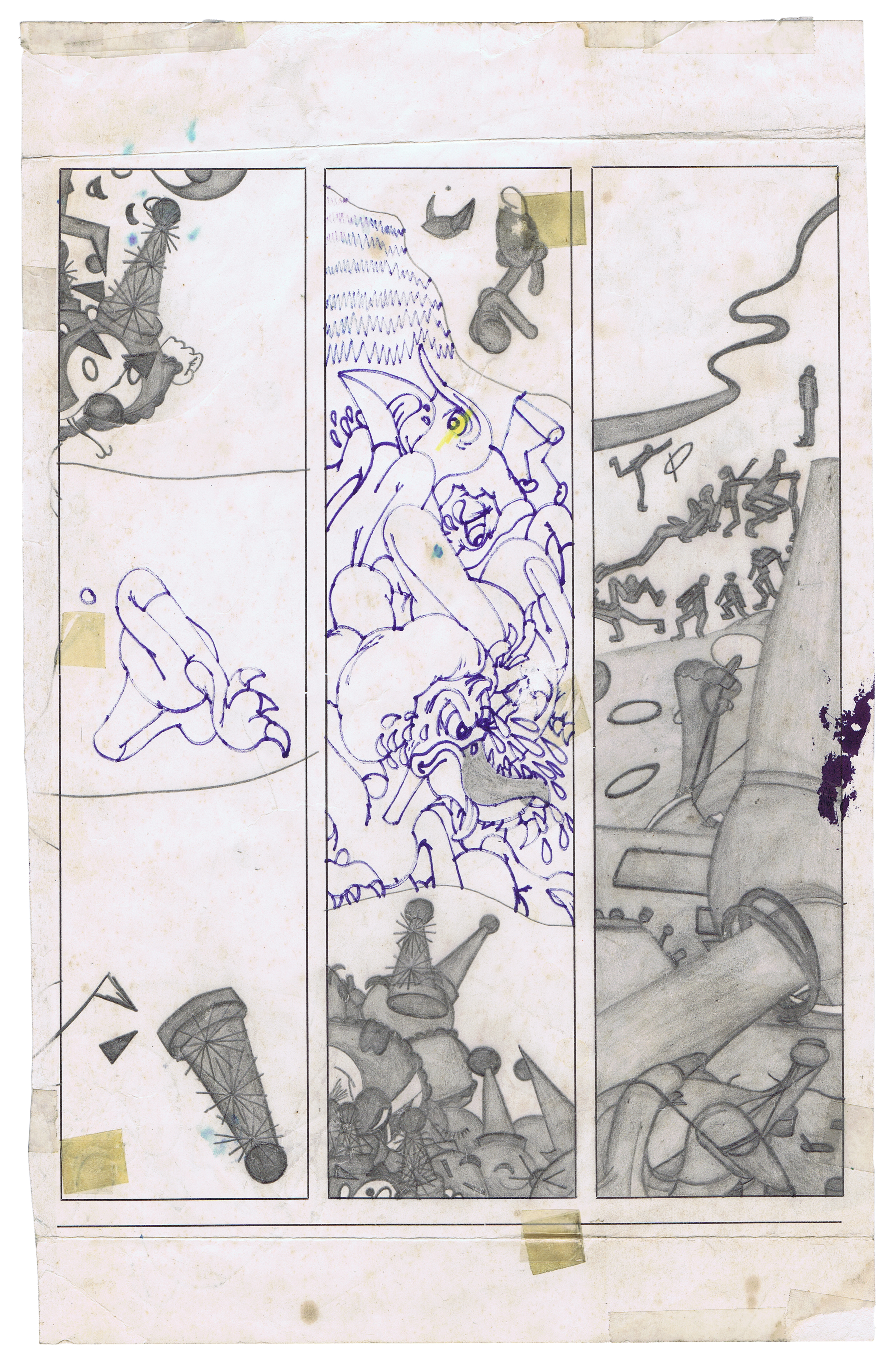
Susan Te Kahurangi King, Untitled, c. 1965-1975, graphite and ink on found paper (3-column editing template, Cranwells Publishing Co), 12 ⅜ x 7 ¾ inches

Susan Te Kahurangi King, Untitled, c. 1965-1975, graphite and ink on found paper (3-column editing template, Cranwells with pre-existing handrwitten text “VJ”), 12 ⅜ x 9 ⅞ inches
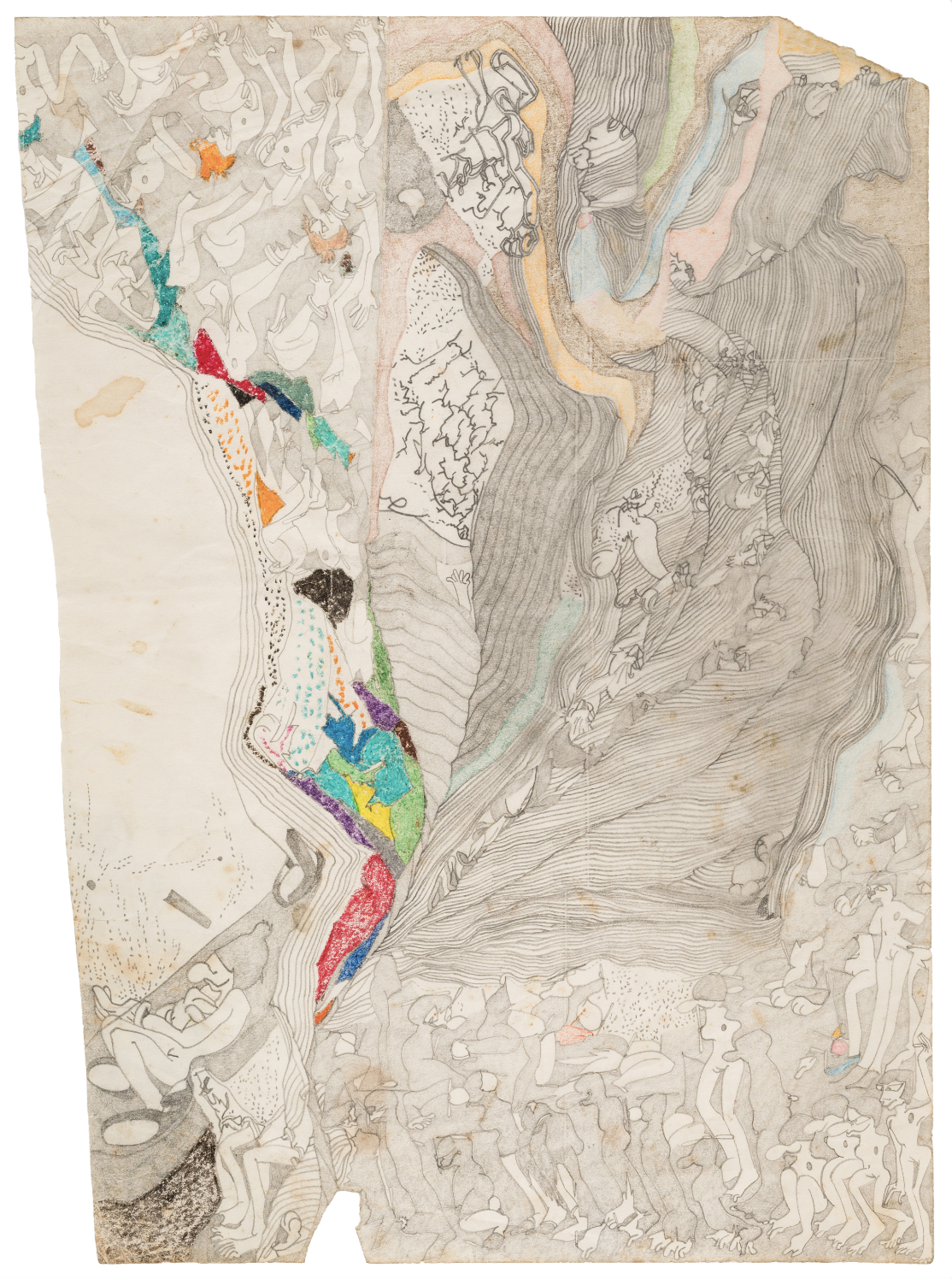
Susan Te Kahurangi King, Untitled, c. 1975-1979, graphite, colored pencil, and crayon on paper (double-sided), 16 ½ x 12 inches

Susan Te Kahurangi King, Untitled, 1966, ink on paper, 10 ¼ x 8 ⅛ inches
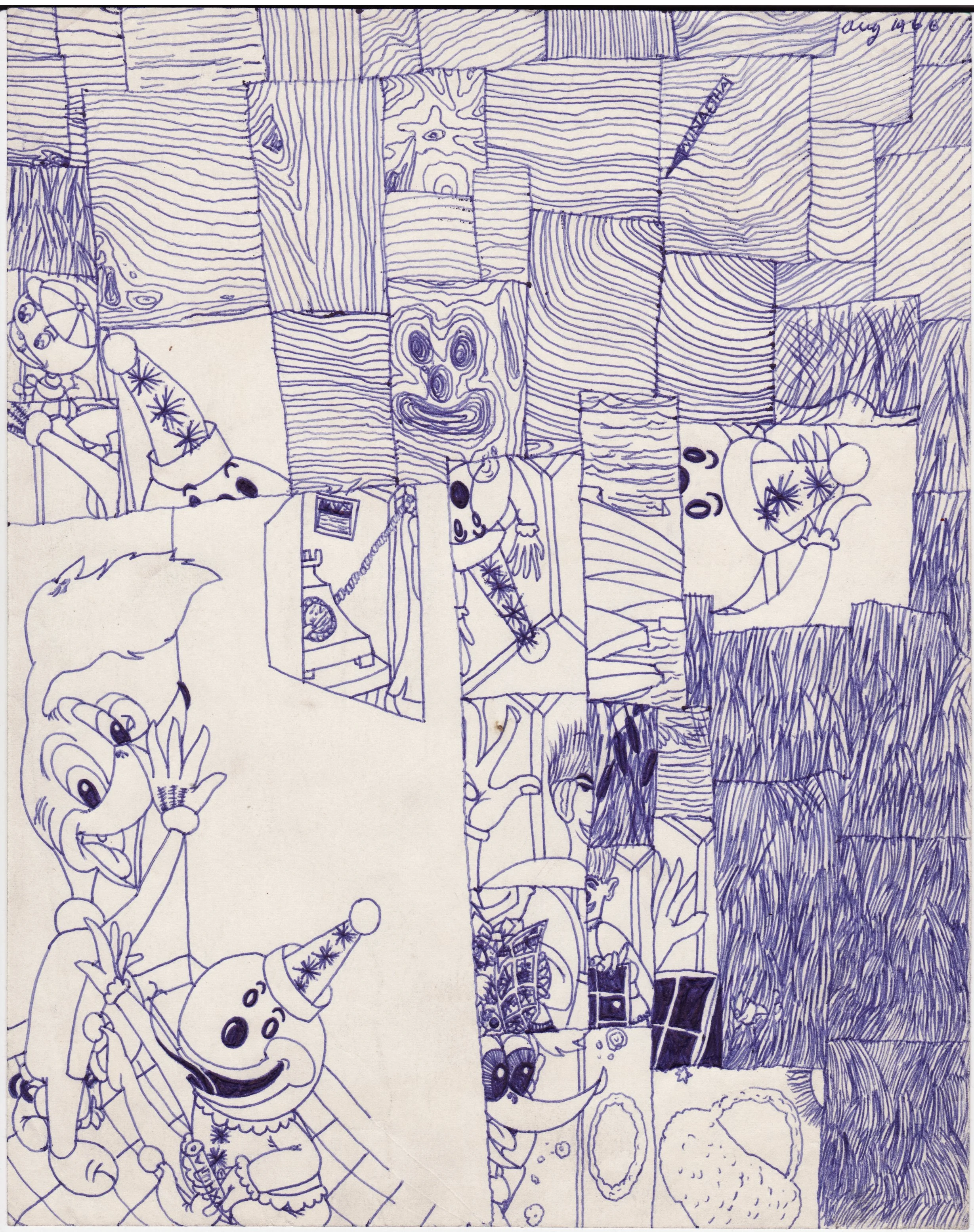
Susan Te Kahurangi King, Untitled, 1966, ink on paper, 10¼ x 8 ⅛ inches
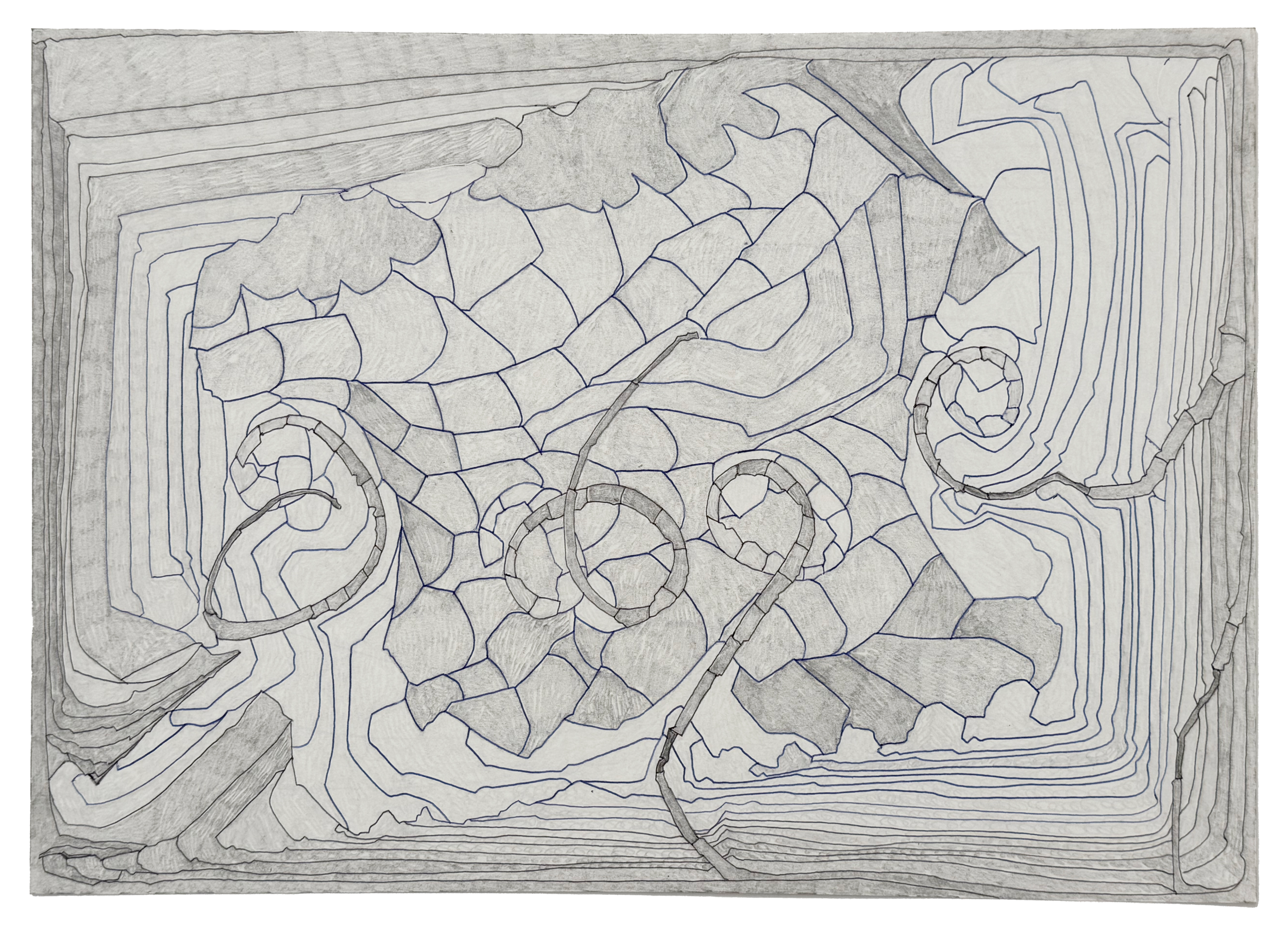
Susan Te Kahurangi King, Untitled, c. 2016, graphite and ink on paper, 11 ¾ x 16 ½ inches
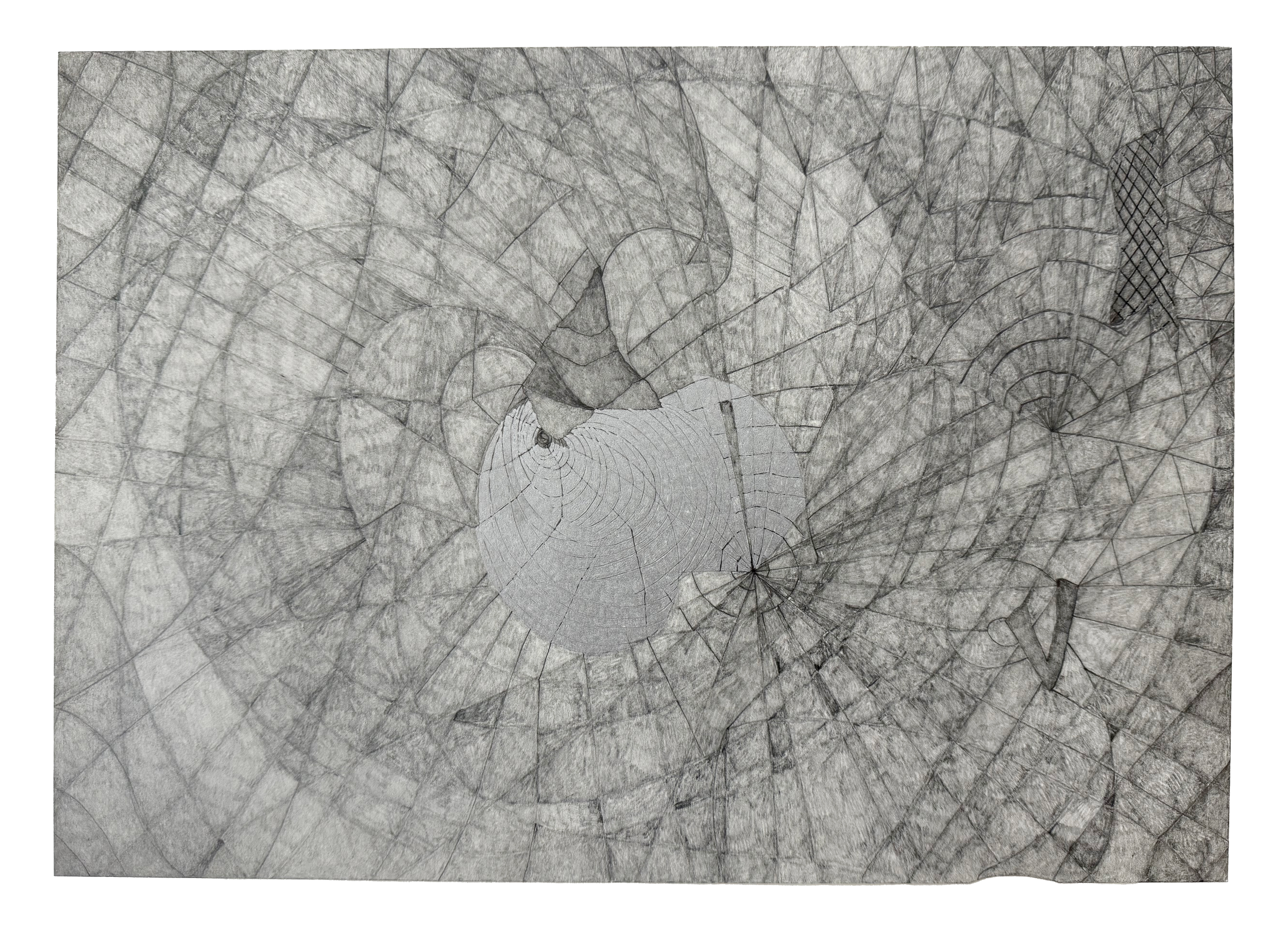
Susan Te Kahurangi King, Untitled, 2022, graphite and ink on paper, 11 ¾ x 16½ inches

Susan Te Kahurangi King, Untitled, c. 1969, graphite and colored pencil on paper, 8 ⅛ x 10 ⅛ inches

Susan Te Kahurangi King, Untitled, 1969, graphite on calendar, 11 ¼ x 11 ⅜ inches
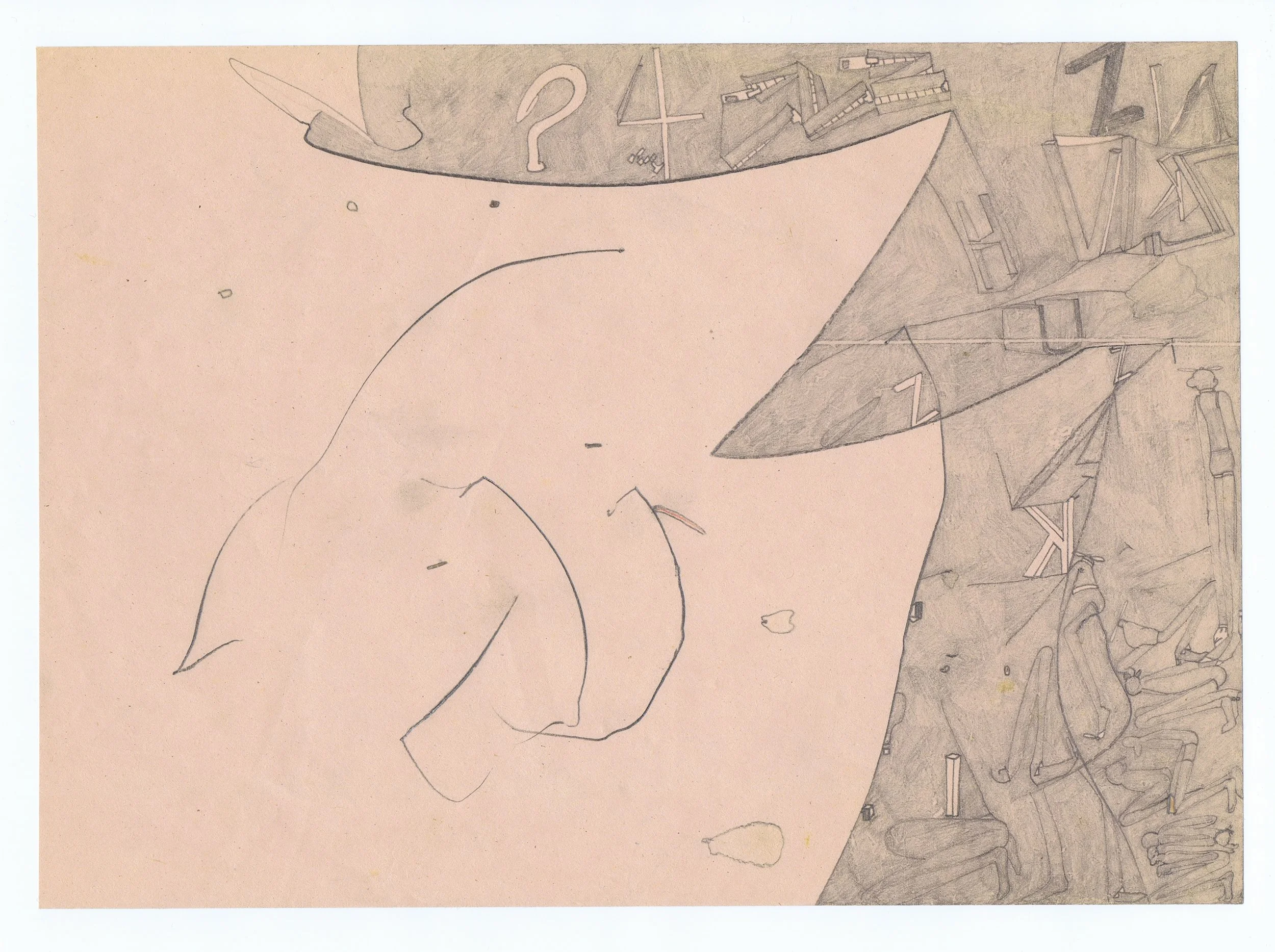
Susan Te Kahurangi King, Untitled, c. 1966. Graphite on paper, 11 1⁄2 x 8 1⁄4 inches.

Susan Te Kahurangi King, Untitled, c. 1976-1980, graphite, colored pencil, and crayon on found paper, 8 ¼ x 6 ⅞ inches

Eric Oglander, Collage, 2024, plywood, poplar, paper, cardboard, 3 ⅞ x 3 ½ x 1 ⅝ inches

Eric Oglander, footing, 2025. Pine, fabric from button down shirt, beeswax, folded penny, 6 x 2 x 2 inches.

Eric Oglander, Locusts, 2022, black locust, paper, 2 x 4 inches

Eric Oglander, Gust, 2024 - 2025, pine, fabric from button down shirt, goatskin, 4 ⅛ x 6 ½ x 3 ¼ inches
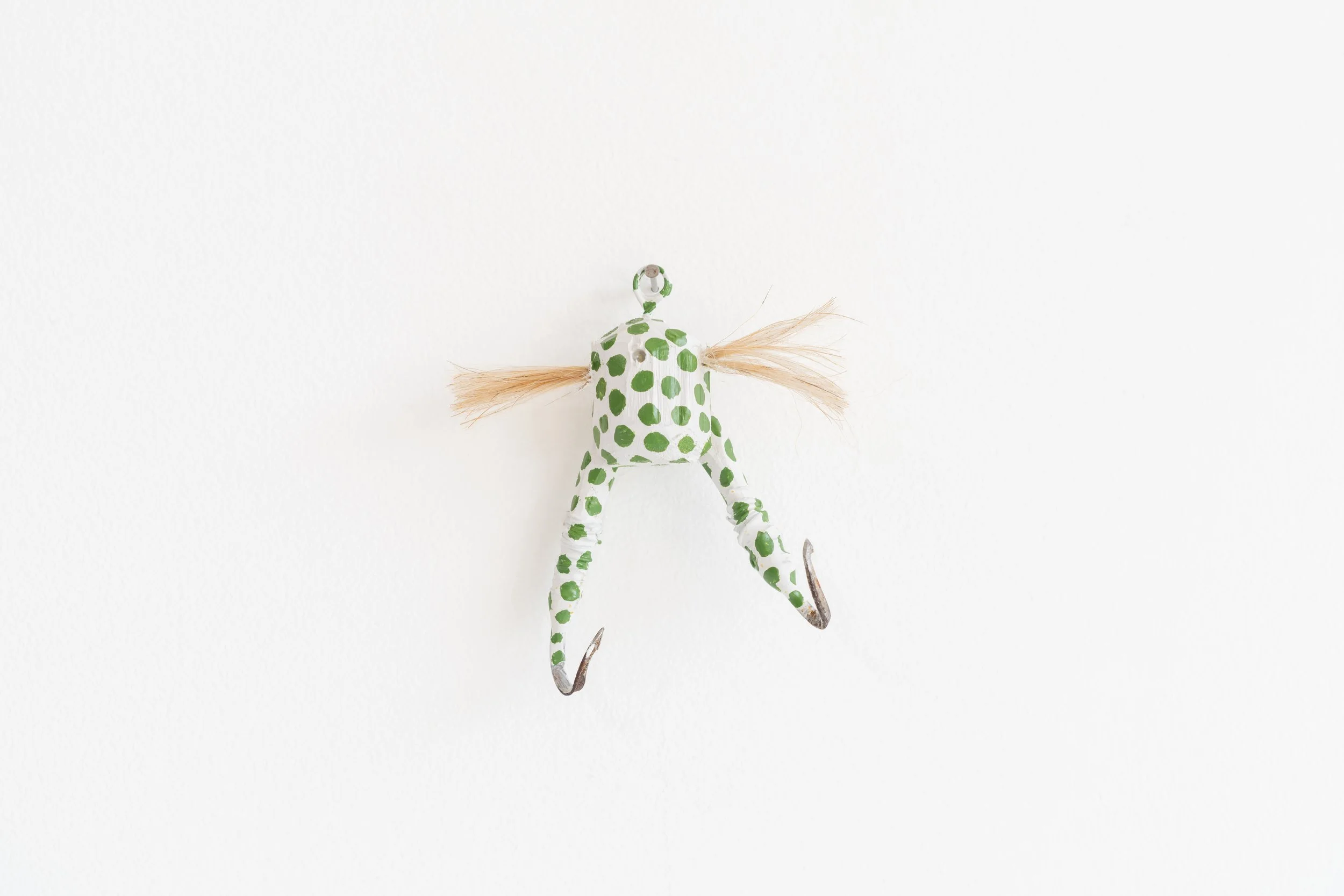
Eric Oglander, Frog lure, 2025, pine, street sweeper bristles, dog fur, wire, epoxy, enamel paint, 3 ¼ x 3 x 1 inches

Eric Oglander, 1977/1811, 2024, 19th century book, quarter, 4 ⅜ x 6 ⅞ inches
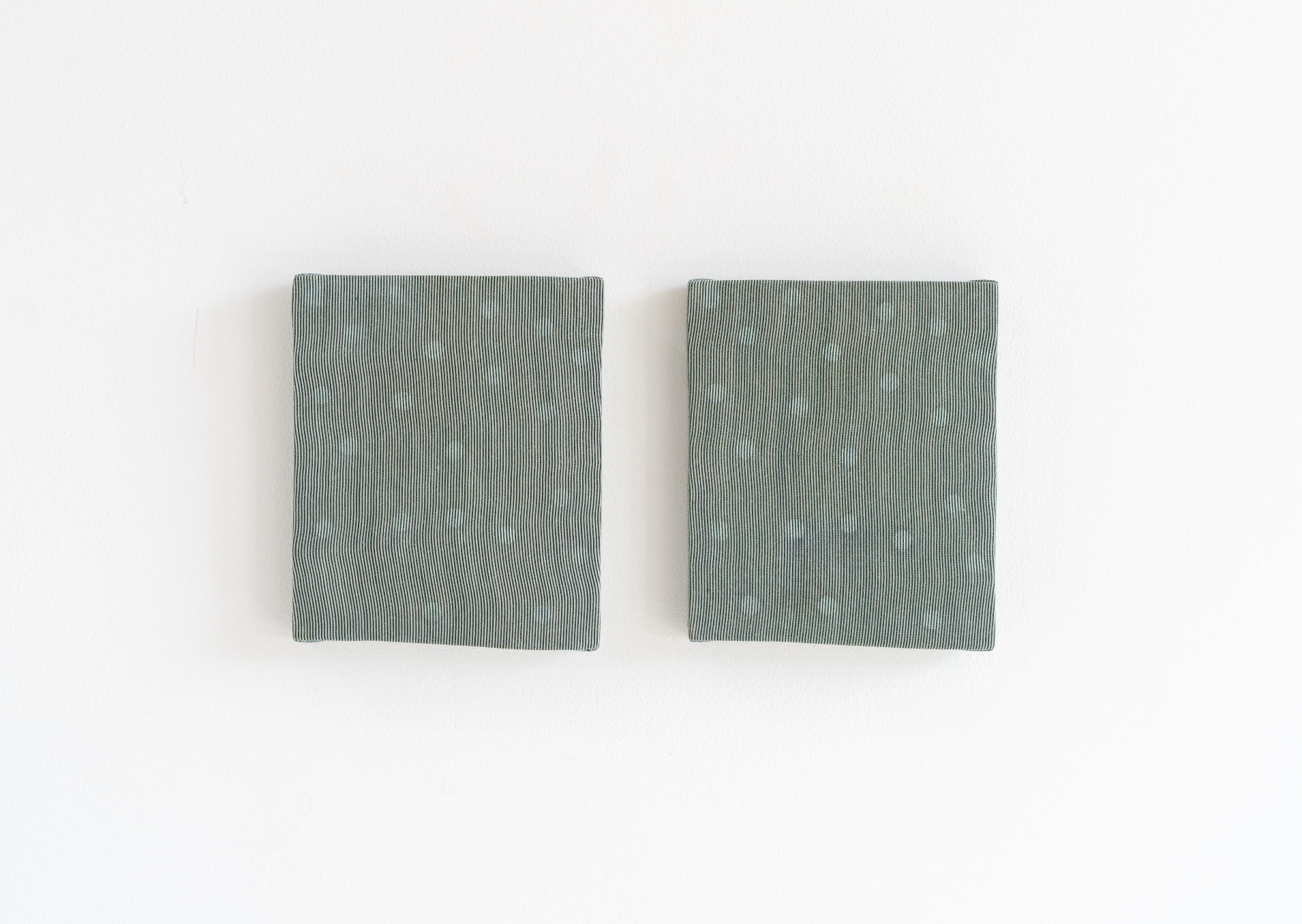
Eric Oglander, One of these things is not like the other, 2025, plywood, fabric from button down shirt, epoxy, beeswax, 4 ¼ x 5 ¼ inches each
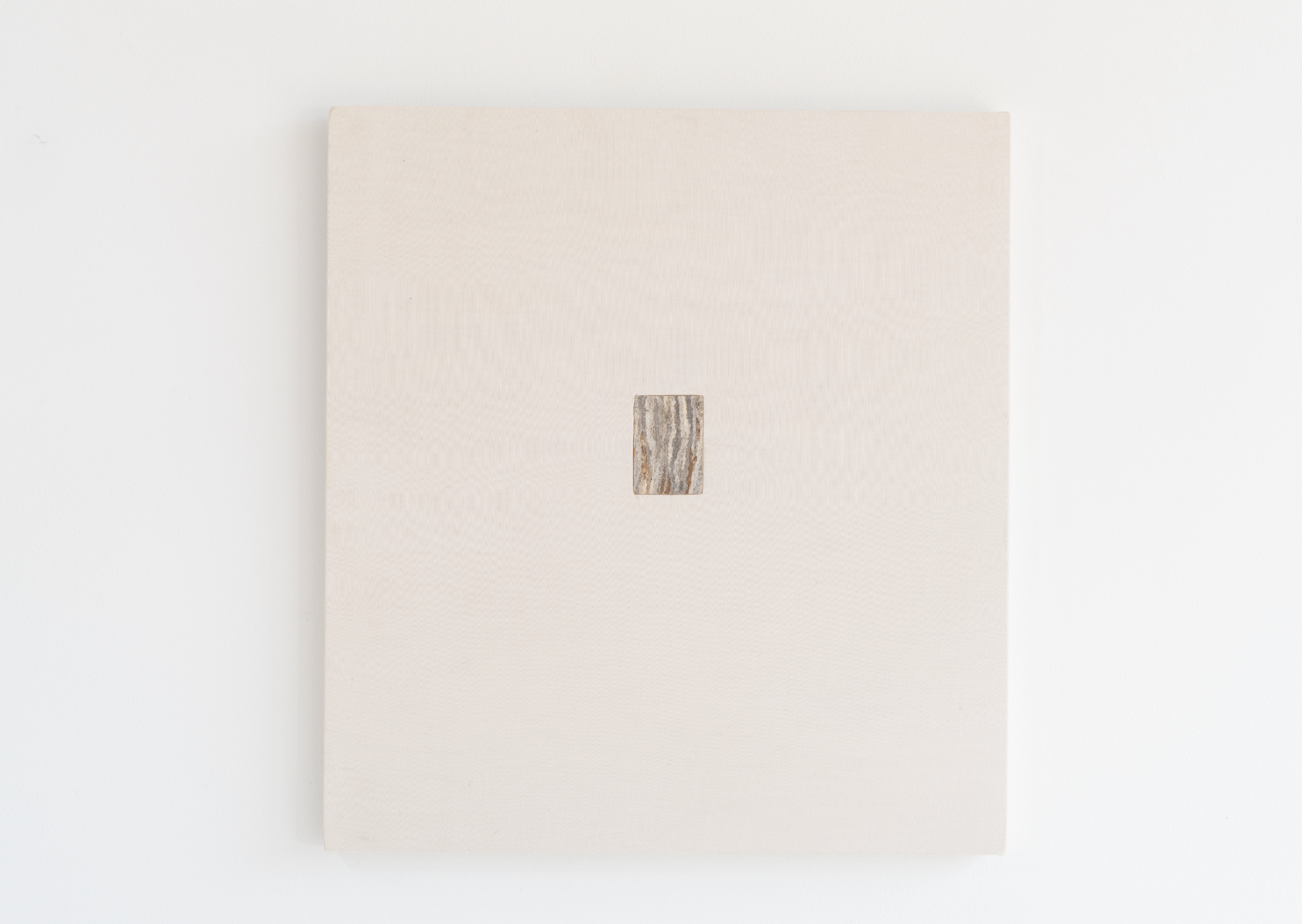
Eric Oglander, Insect Drawing, 2025, plywood, fabric from bed sheet, hornets nest, 13 ¾ x 15 inches

Eric Oglander, Same but different, 2024, plywood, fabric from button down shirt, pine, 5 ⅛ x 5 ⅞ inches
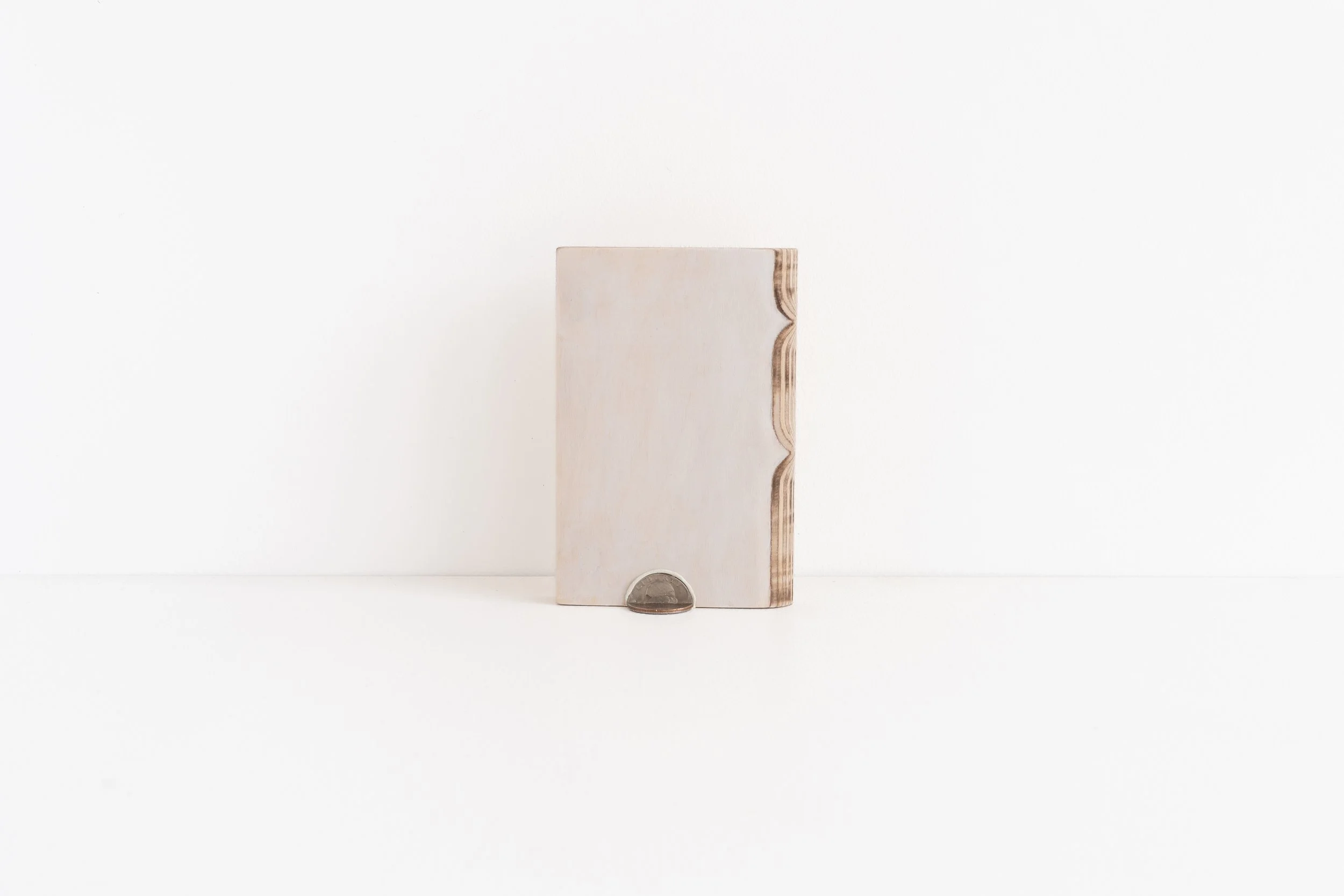
Eric Oglander, 1972, 2025, plywood, epoxy, quarter, acrylic paint, 3 ½ x 5 ¼ x ¾ inches

Eric Oglander, Who’s catching who, 2025, pine, linen from bed sheet, street sweeper bristle, nylon string, stainless steel, 4 ¼ x 4 ¾ x 3 inches
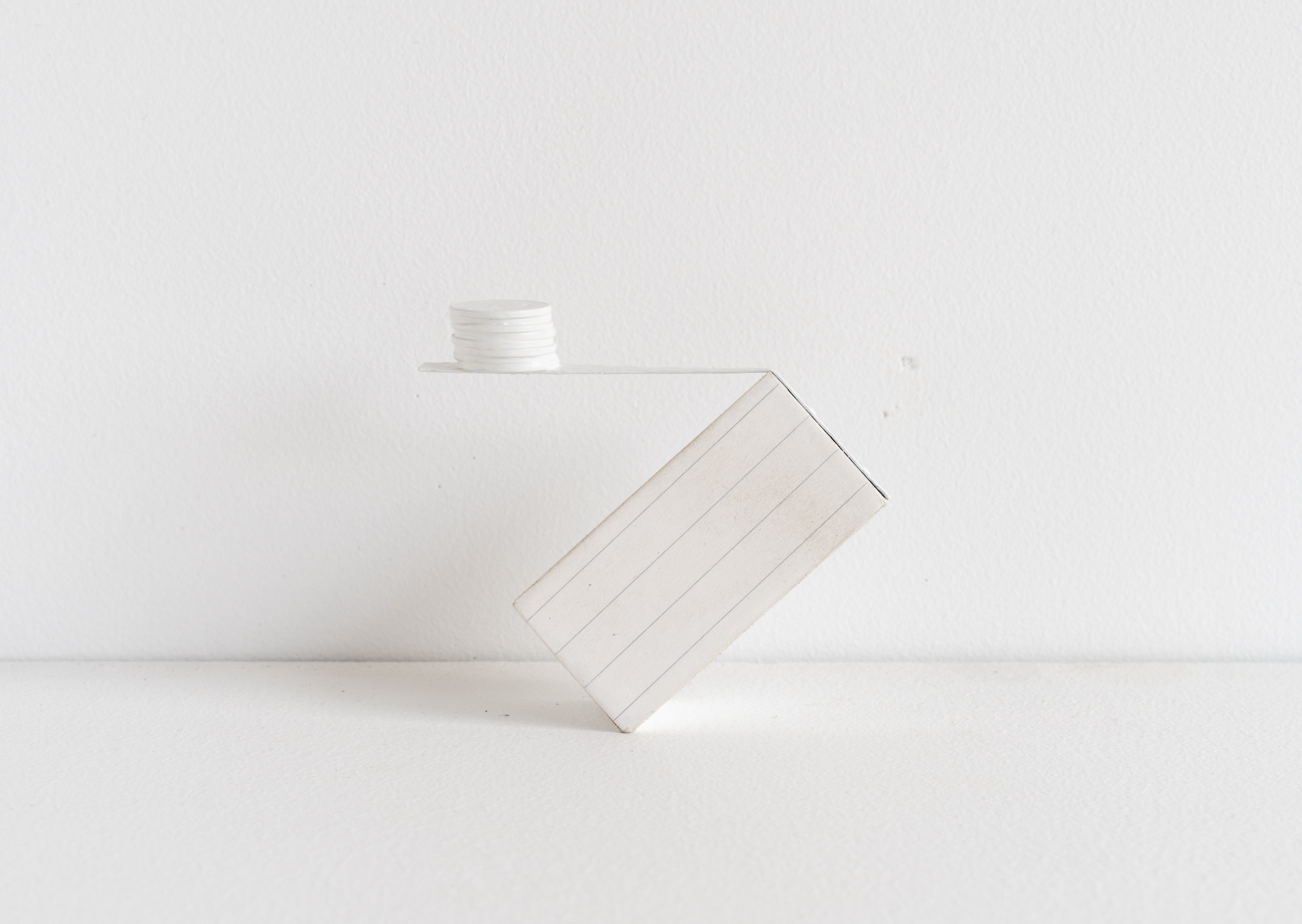
Eric Oglander, Rule of balance, 2025, poplar, copper, pennies, paper, enamel paint, 3 ½ x 1 ⅛ x 3 ⅛ inches

Eric Oglander, Snag, 2025, poplar, street sweeper bristle, nylon string, stainless steel, fabric from t-shirt, 8 x 5 x 1 ⅜ inches
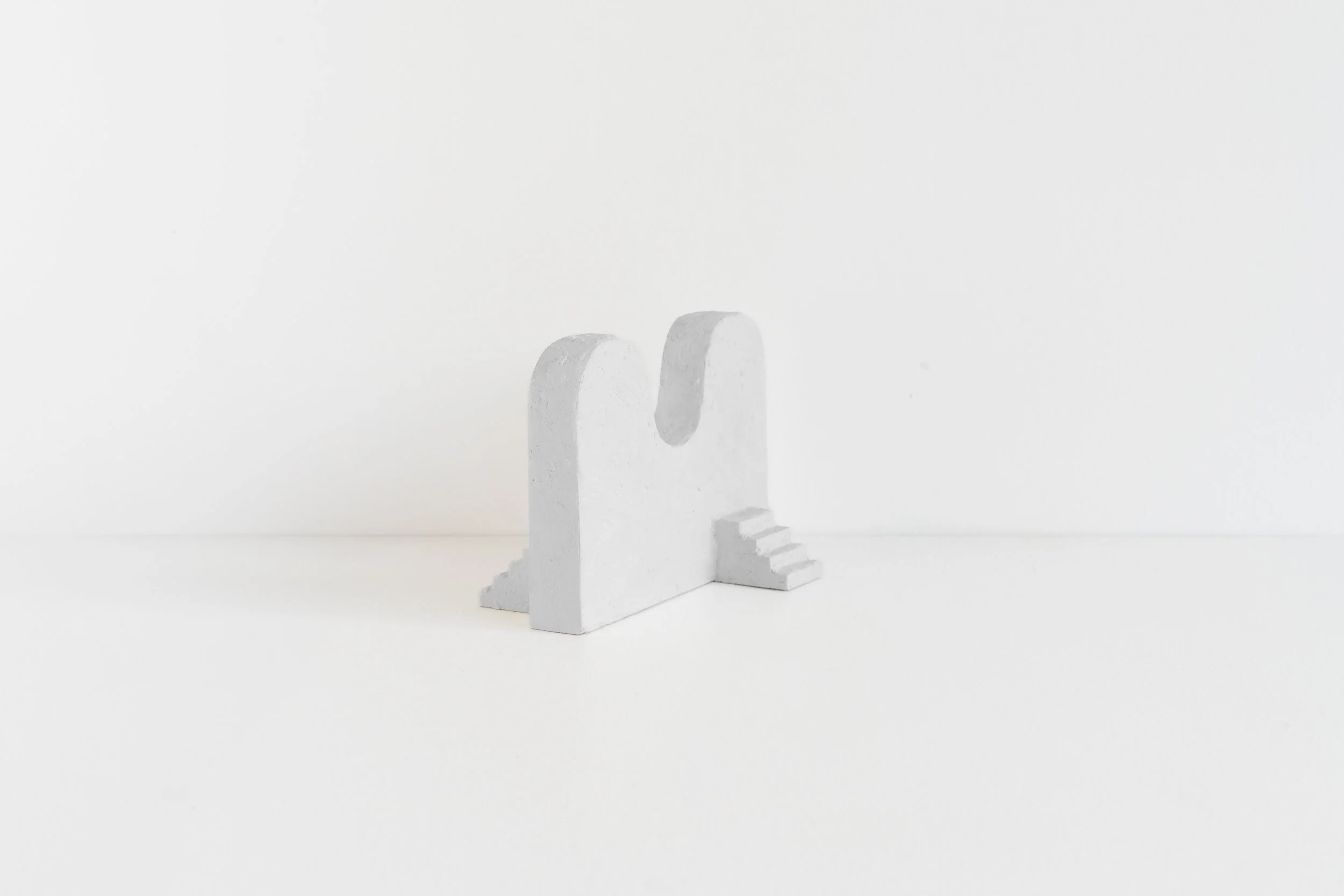
Eric Oglander, Dromedary, 2023, pine, plywood, epoxy, acrylic paint, 4 ¾ x 3 ½ x 4 ¼ inches
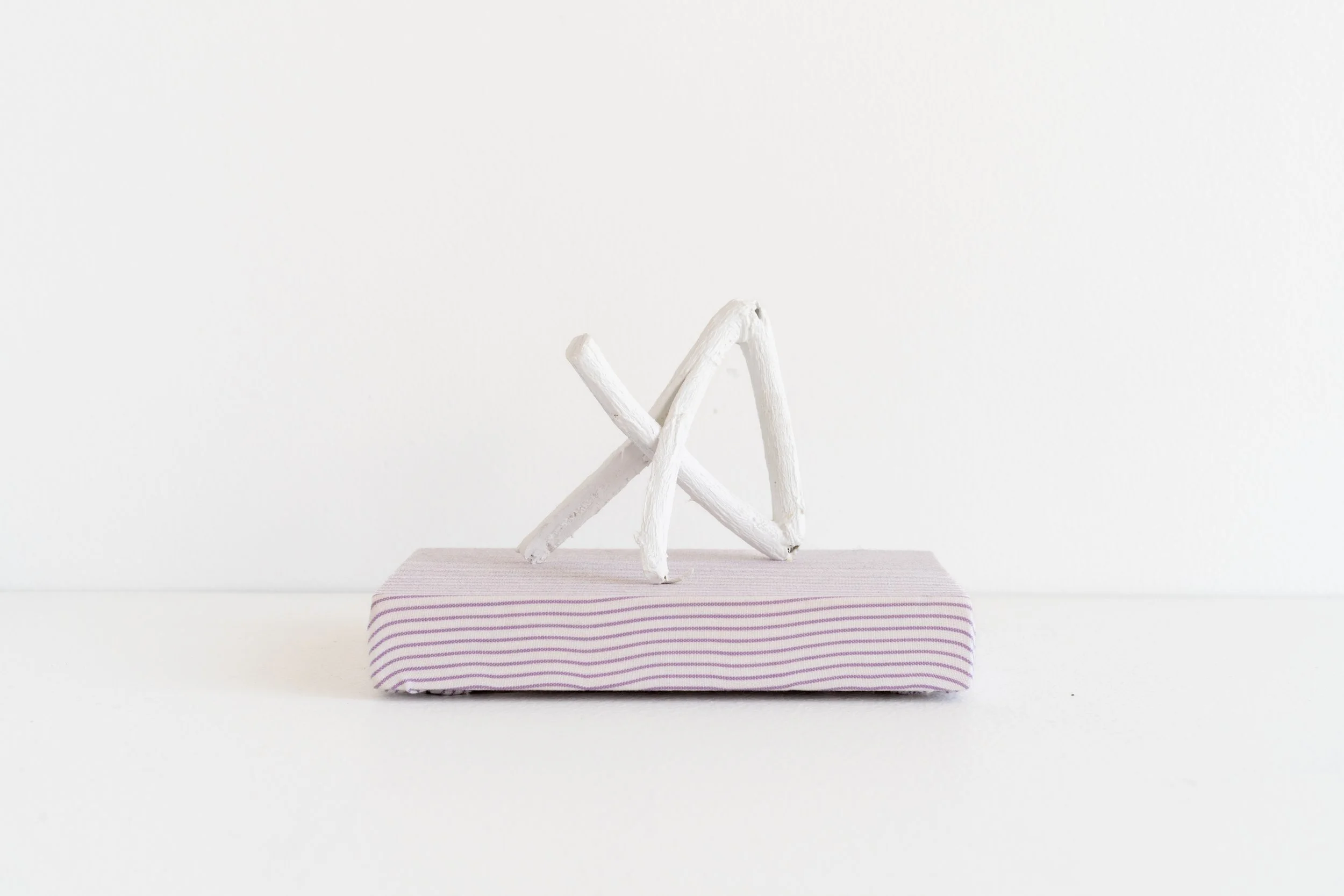
Eric Oglander, Broken twice, split, nailed, 2023, poplar, mulberry, nail, fabric from button down shirt, acrylic paint, 5 x 3 ½ x 3 ⅝ inches

Eric Oglander, Plants split, plants chewed 2, 2025, split ash, hornets nest, 7 ⅞ x 7 ¾ x 2 inches

Eric Oglander, Clones, 2025, poplar, fabric from bed sheet, fabric from button down shirt, paper, acrylic paint, epoxy, bamboo skewers, 6 x 2 ½ x 2 ⅜ inches
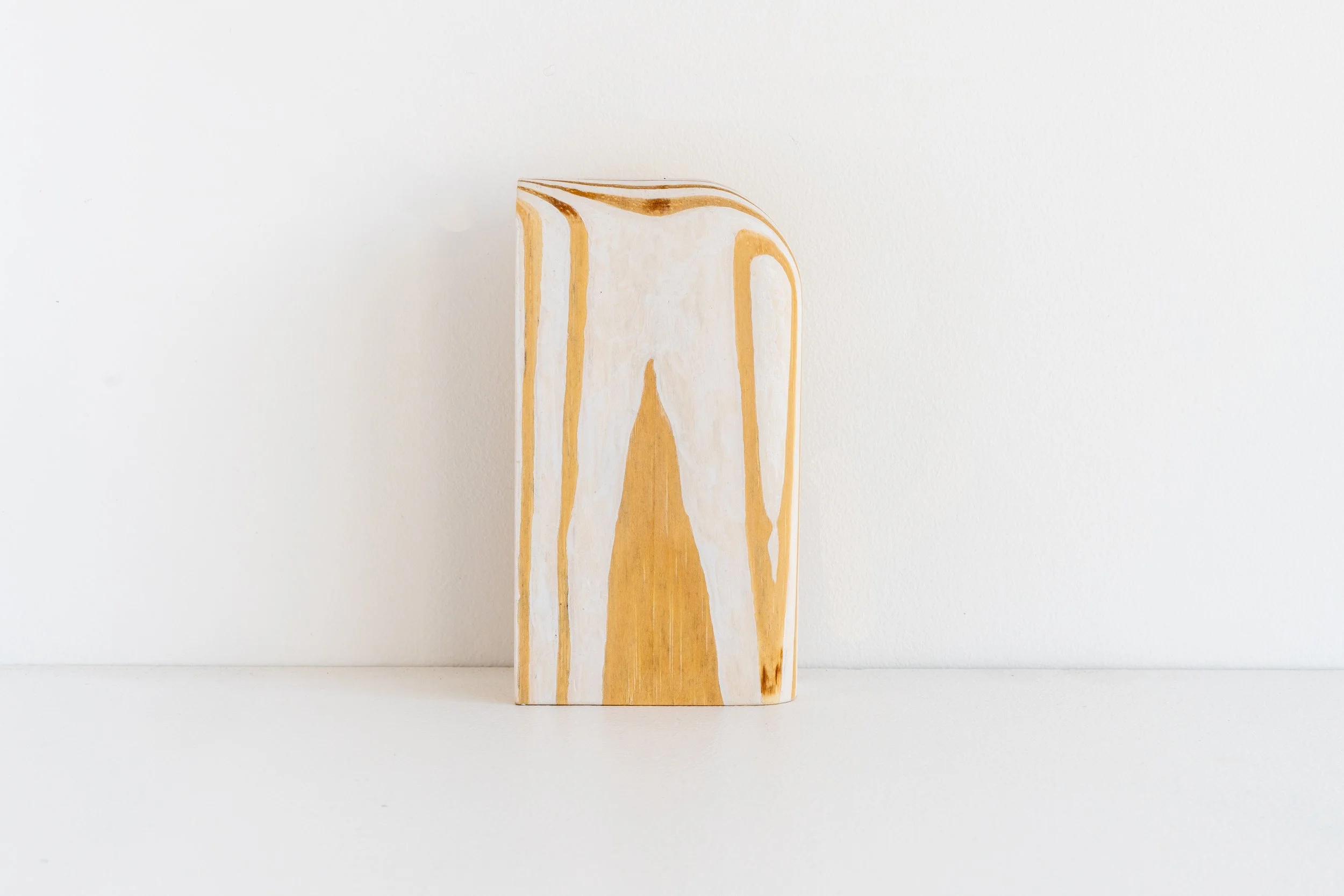
Eric Oglander, What’s there, 2025, pine, enamel paint, 3 ¼ x 5 ⅞ x 1 ¼ inches

Eric Oglander, Branch Eyes, 2025, pine, fabric from button down shirt, snake bark maple, 11 ¼ x 12 ⅝ inches

Eric Oglander, Cord, 2025, plywood, maple, fabric from button down shirt, 18 x 18 inches

Eric Oglander, Disney Stickers, 2025, plywood, linen from bed sheet, paper, cyanotype, 11 ½ x 12 inches

Eric Oglander, 1st lure, 2025, honeysuckle, street sweeper bristles, wire, epoxy, dog fur, fabric from button down shirt, quarter, aluminum, nails, nylon string, 10 x 2 inches

Eric Oglander, Halves, 2023, maple, poplar, linen from bed sheet, 6 x 4 ½ x 1 ⅛ inches

Eric Oglander, Windsor chair/stool from Caroline Seagrave, my dead downstairs neighbor. Meat grinder. 17 ⅜ x 22 ⅞ x 17 ¾ inches
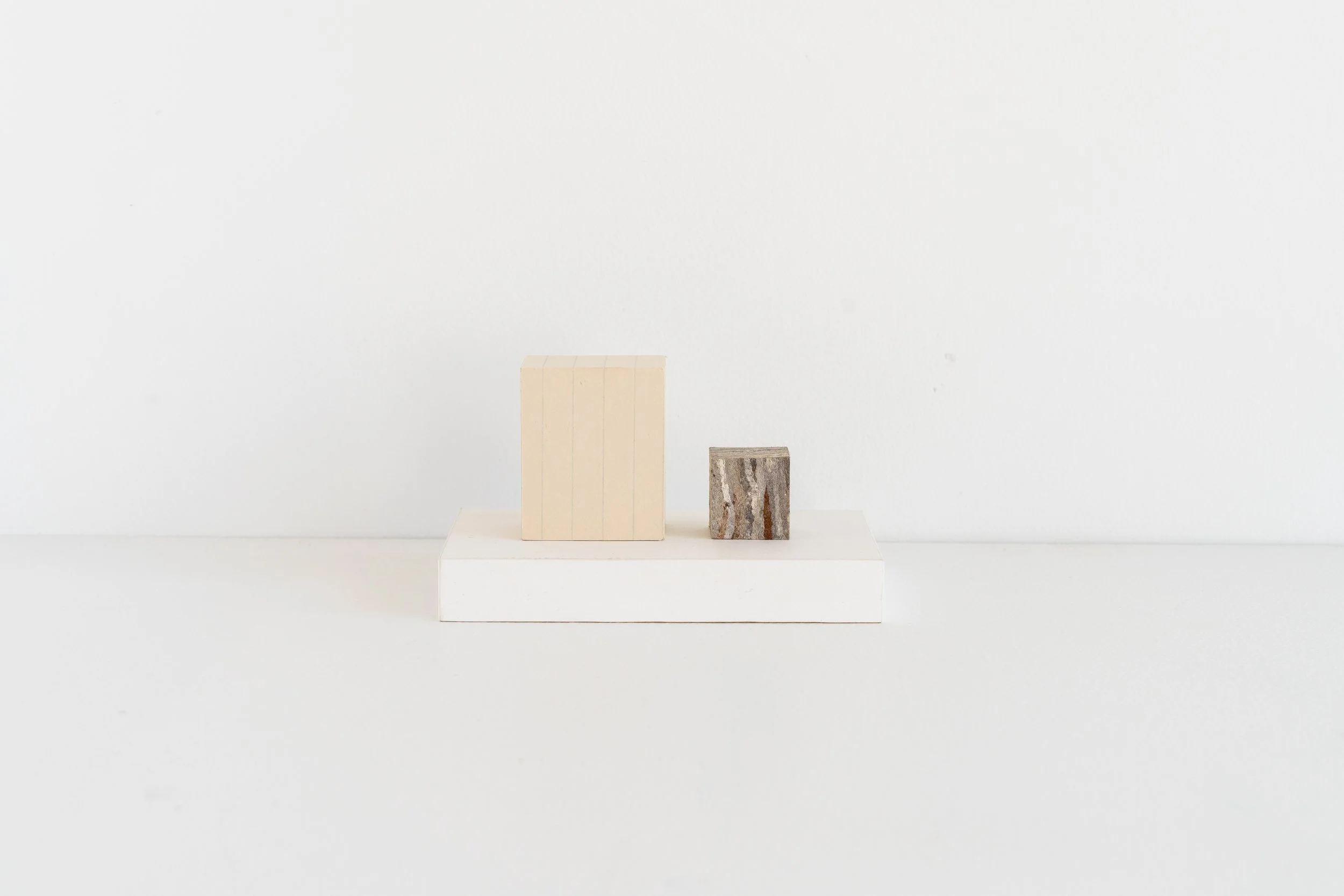
Eric Oglander, Paper three ways, 2025, paper, hornets nest, plywood, poplar, 5 x 2 ¾ x 3 inches

Eric Oglander, Whittle, 2023, split ash, paper, pine, poplar, acrylic paint, 2 ⅛ x 2 ⅞ x 2 inches
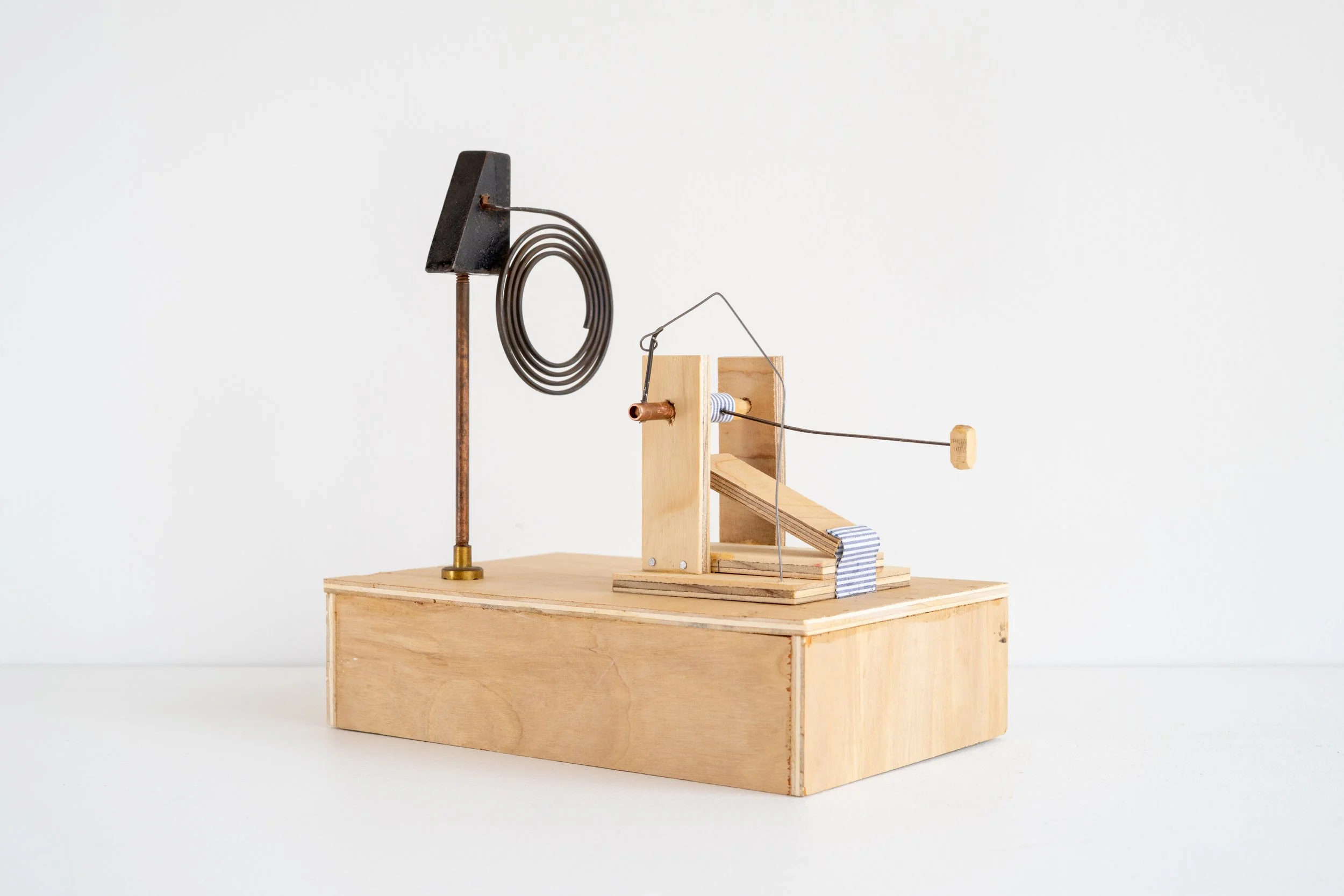
Eric Oglander, Keeper of any time, 2025, plywood, fabric from button down shirt, pine, copper, wire, nails, chime from antique clock, street sweeper bristle, 9 ⅜ x 8 ½ x 5 ⅜ inches

Eric Oglander, It’ll be fun, 2023, pine, fabric from button down shirt, acrylic paint, 4 ¾ x 2 ⅜ x 4 ⅛ inches

Eric Oglander, Only with a sharp knife, 2024, pine, plywood, paper, cyanoacrylate glue, 2 ½ x 5 ⅛ x 1 ¾ inches

Eric Oglander, My mom taught me how to make a paper airplane, 2024, plywood, poplar, goatskin, acrylic paint, 5 ⅝ x 6 ⅞ x 3 ⅜ inches

Eric Oglander, Three taught, 2025, poplar, wire, street sweeper bristles, nylon string, 3 ¾ x 7 ⅝ x 2 ⅝ inches
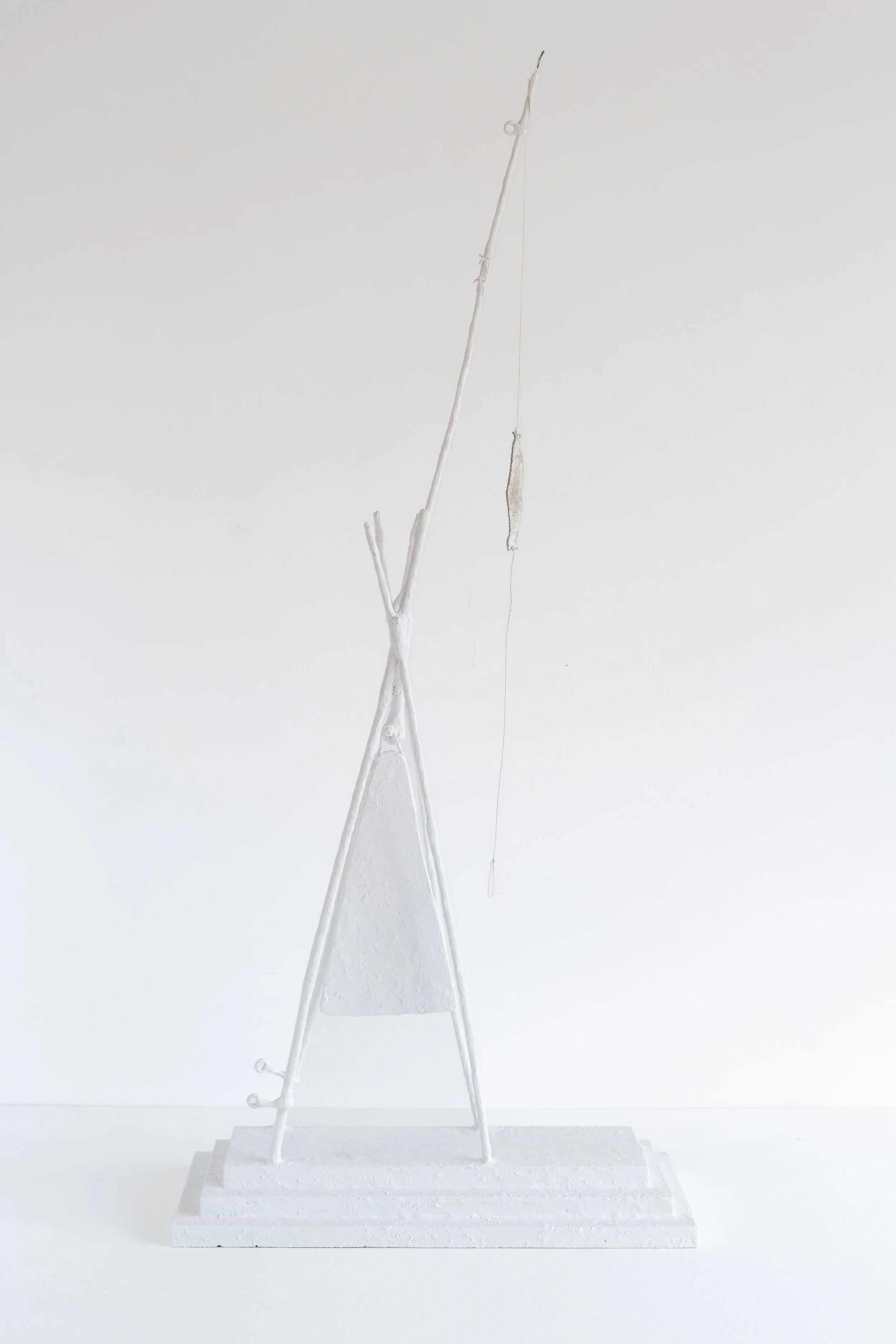
Eric Oglander, Bad neighbor, 2021 - 2025, plywood, mahogany, epoxy, wire, nylon string, leather bamboo, brass, acrylic paint, 17 ⅛ x 38 ½ x 7 ⅝ inches
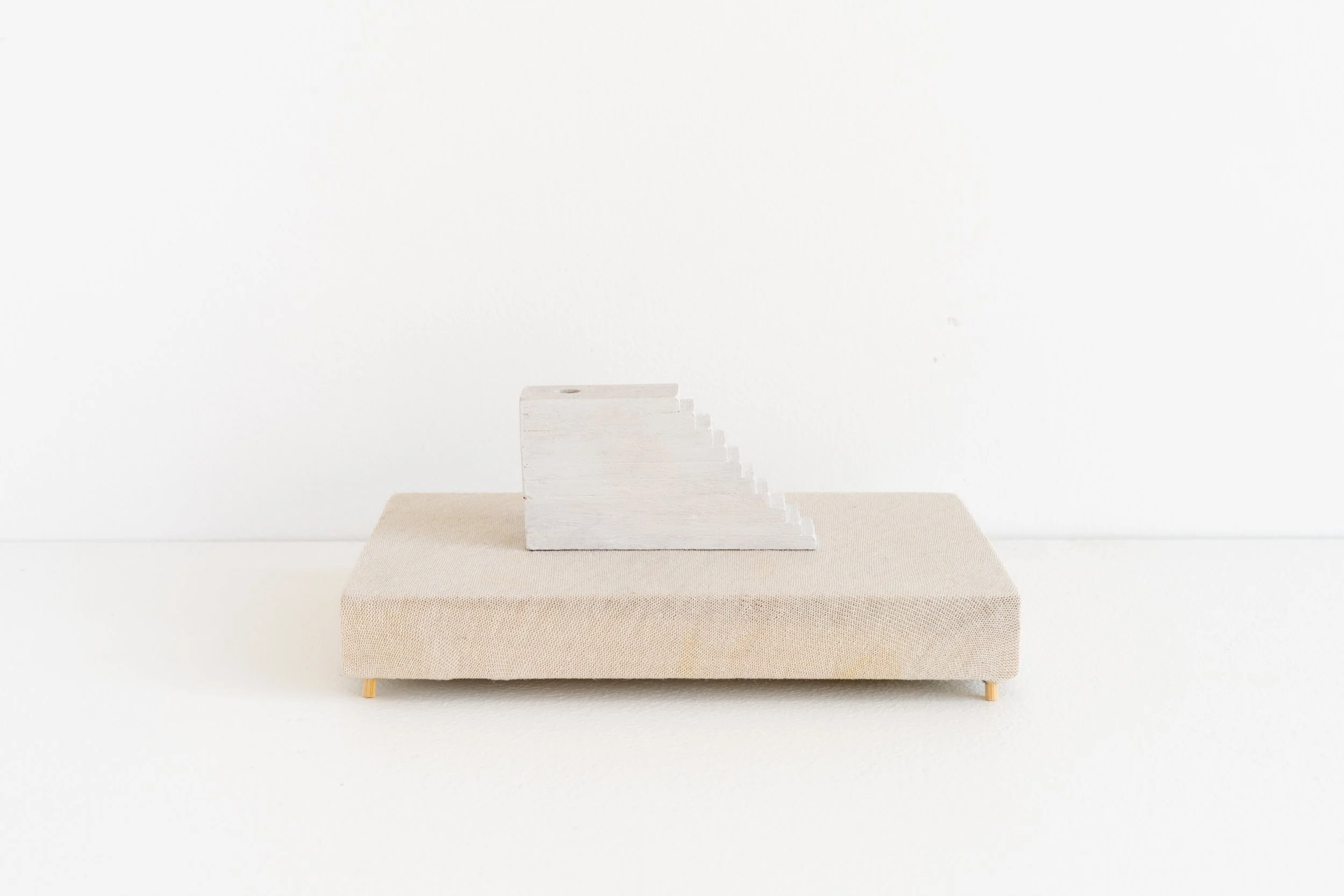
Eric Oglander, Flight to void, 2023, poplar, plywood, fabric from t-shirt, acrylic paint, bamboo skewers, 6 x 2 ⅜ x 3 ½ inches
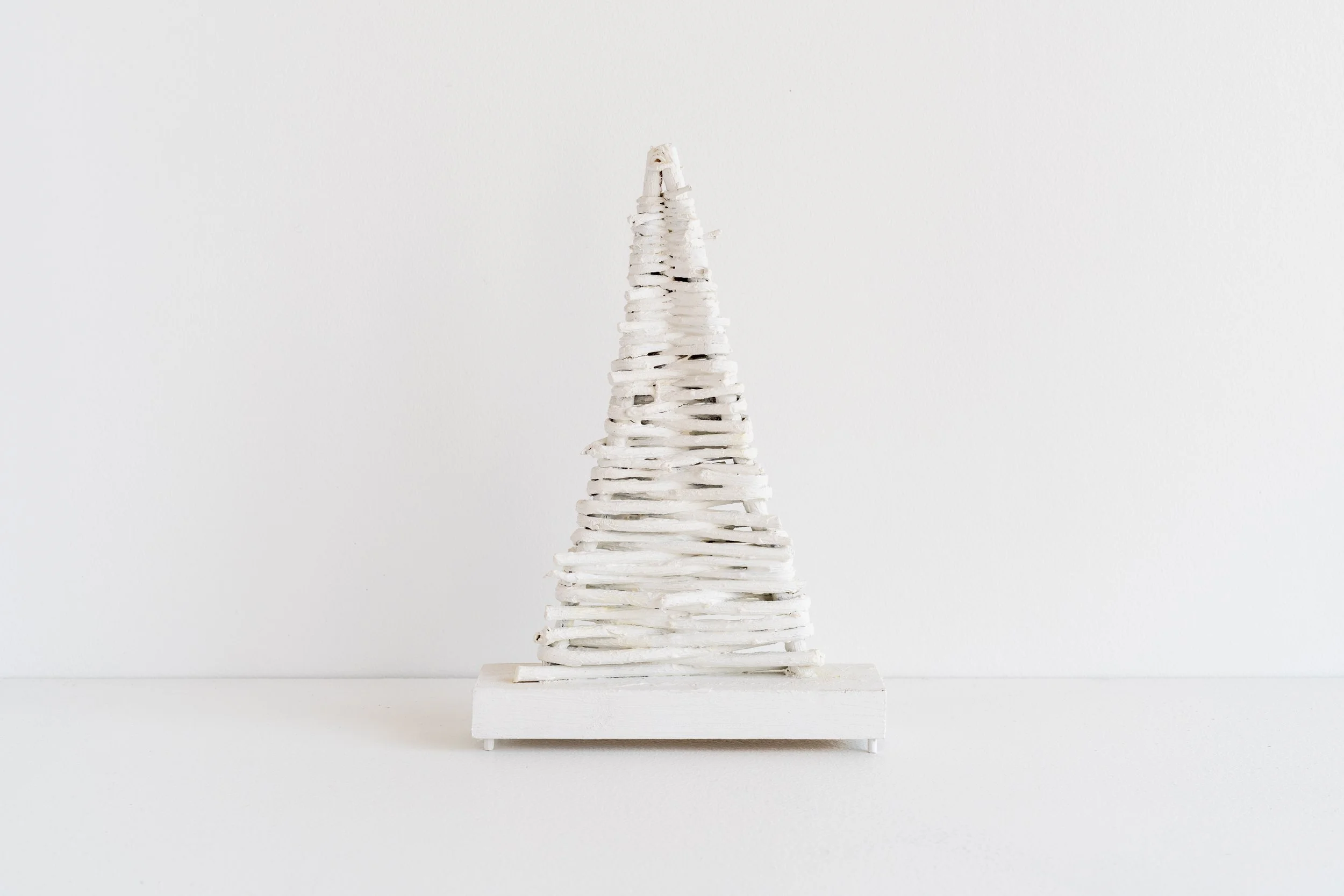
Eric Oglander, The Christmas tree, 2023, poplar, willow, bamboo skewers, acrylic paint, 5 ¾ x 8 ¼ x 1 ½ inches

Eric Oglander, 9/4’s, 2025, pine, brass, quarters, enamel paint, 4 ⅜ x 4 ⅝ x 2 inches

Eric Oglander, Lawn Chair (launcher), 2020 - 2025, found child’s chair, wood from oak crutch, Kevlar string, leather from baseball glove, bicycle inner tube, rope, metal hardware, quarters, misc. wood, zip ties, acrylic paint, 21 x 35 ½ x 14 inches
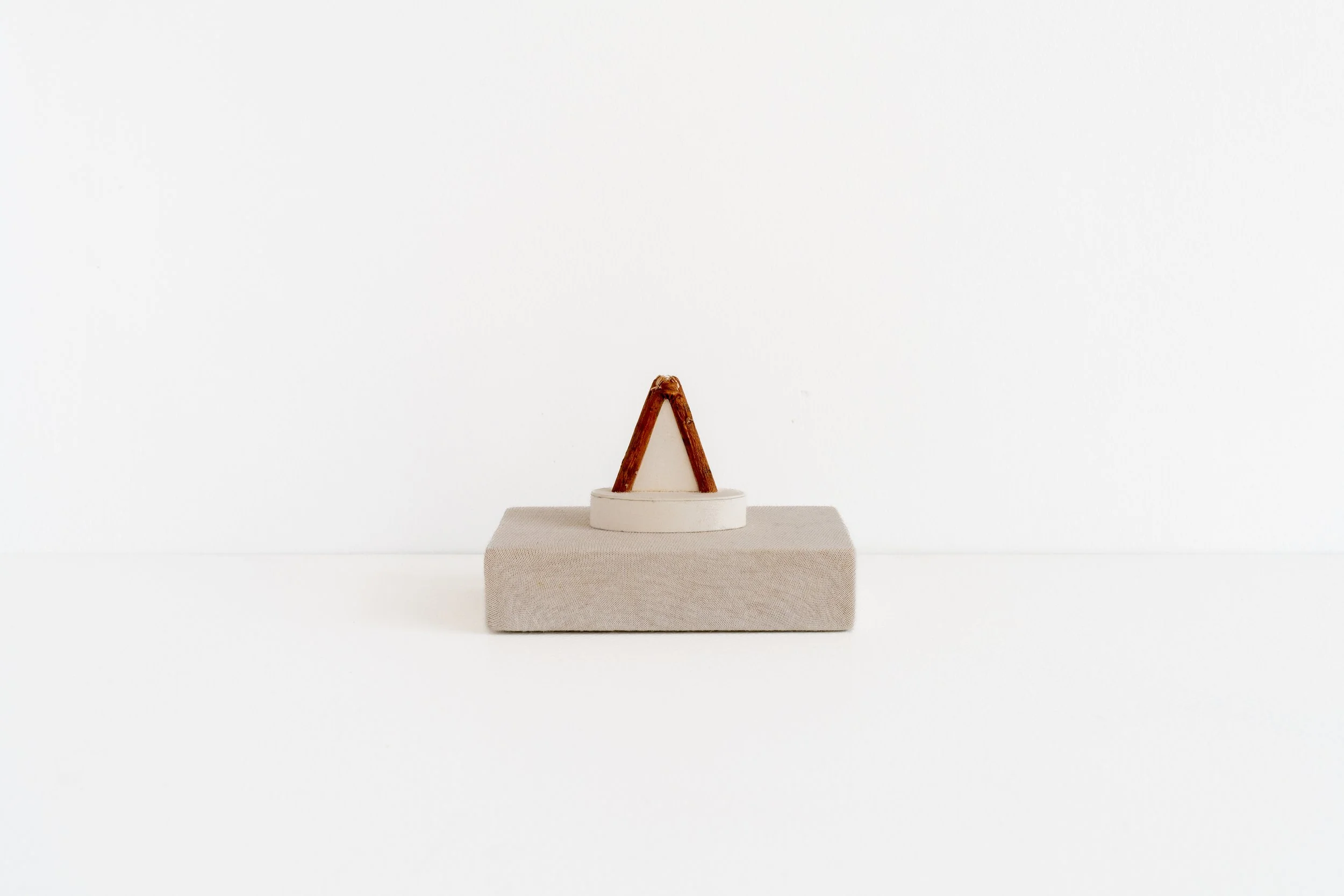
Eric Oglander, Split mulberry filled with paper, 2023, poplar, mulberry, paper, fabric from t-shirt, 4 ¾ x 3 ¼ x 3 ⅛ inches

Eric Oglander, Waffling, 2023, pine, fabric from button down shirt, street sweeper bristle, acrylic paint, 5 ¼ x 4 ⅜ x 4 ⅛ inches

Eric Oglander, Weight of pine, 2023, pine, nails, epoxy, mulberry, acrylic paint, 5 ⅛ x 5 ⅛ x ¾ inches

Eric Oglander, Torsion, 2025, plywood, fabric from button down shirt, pine, metal hardware, bamboo, nylon string, copper, linen from bed sheet, acrylic paint, 7 x 4 ⅜ x 14 ¼ inches

Eric Oglander, Split drop, 2024, plywood, sycamore, linen from bed sheet, goatskin, acrylic paint, split ash, nylon string, 2 ½ x 7 ½ x 2 inches
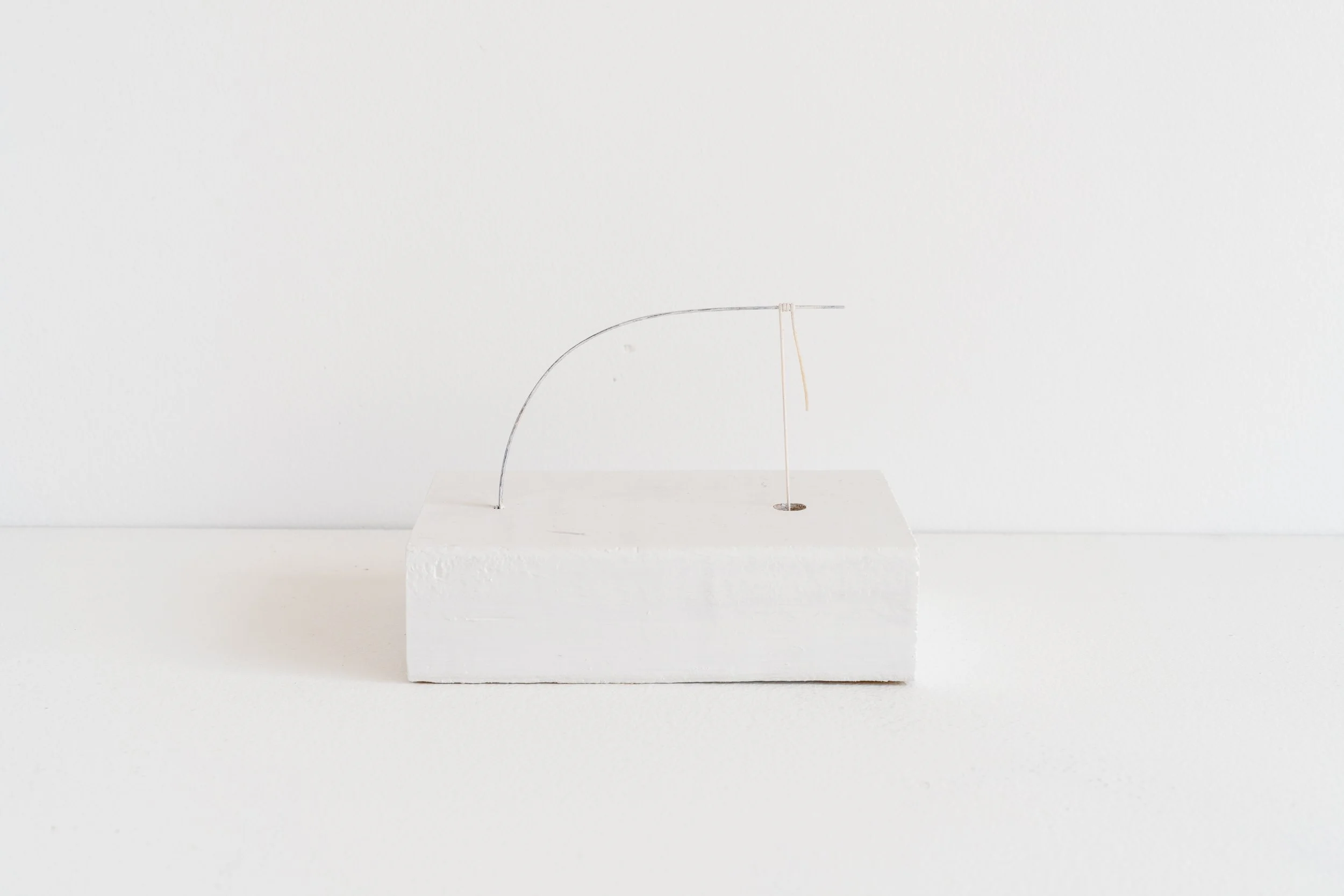
Eric Oglander, Hotdog down a crawdad hole, 2024 - 2025, pine, nylon string, street sweeper bristle, epoxy, India ink, enamel paint, 5 ⅜ x 4 ⅞ x 3 ½ inches
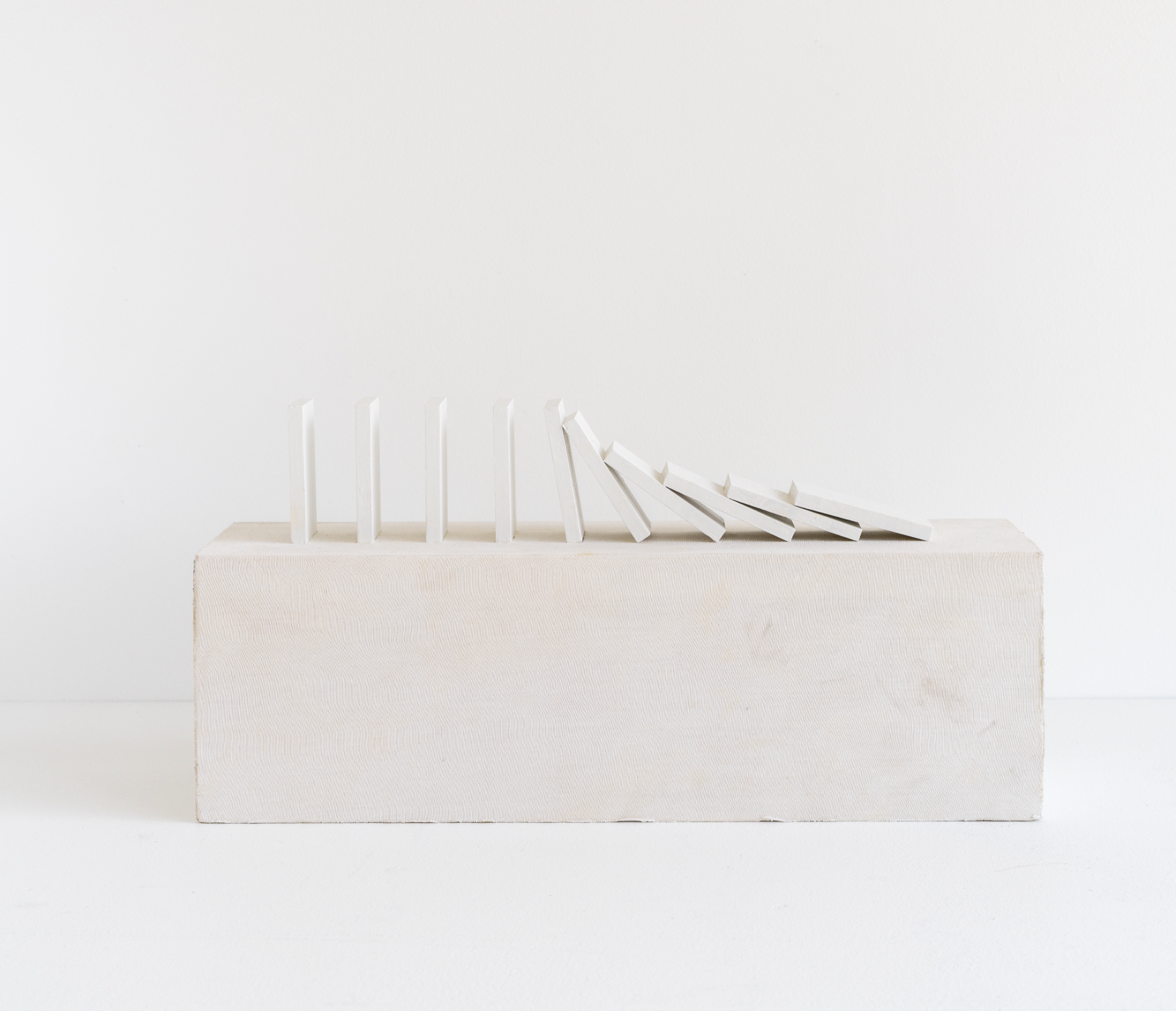
Eric Oglander, Sixth stops time, 2024, plywood, fabric from t-shirt, poplar, enamel paint, 15 x 7 ⅜ x 4 ⅝ inches

Eric Oglander, Homage to the once useful, 2025, mahogany, fabric from t-shirt, toothpicks, poplar, bamboo skewers, fabric from button down shirt, acrylic paint, 7 x 5 x 3 ⅛ inches
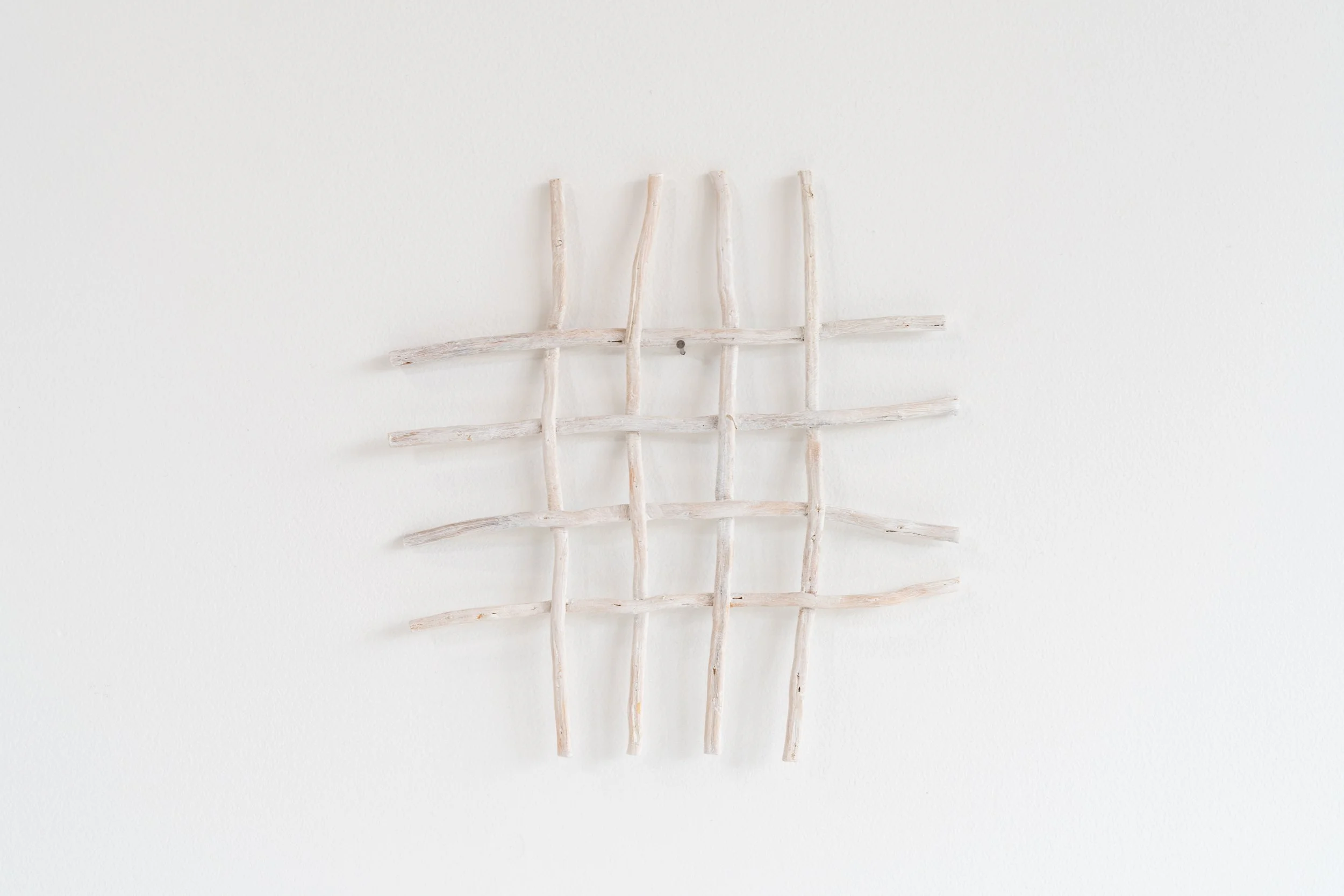
Eric Oglander, Nine Squares, 2022, spruce roots, acrylic paint, glue, 7 x 7 ½ inches
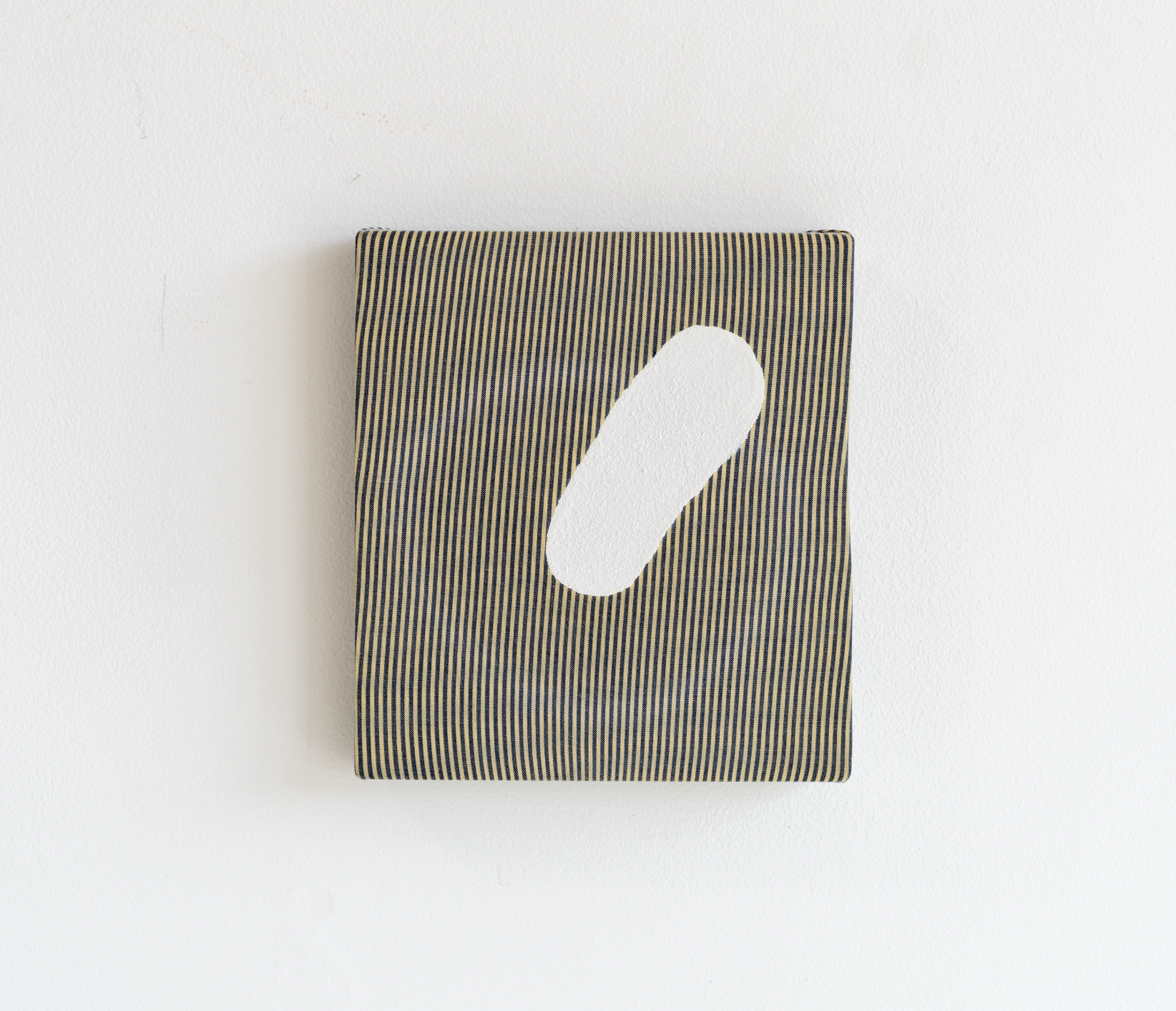
Eric Oglander, Orb, 2025, plywood, fabric from button down shirt, enamel paint, linseed oil, 5 ½ x 6 inches
